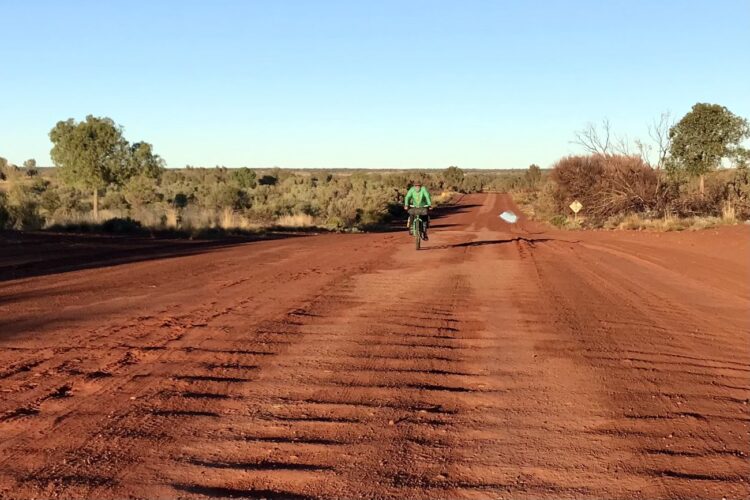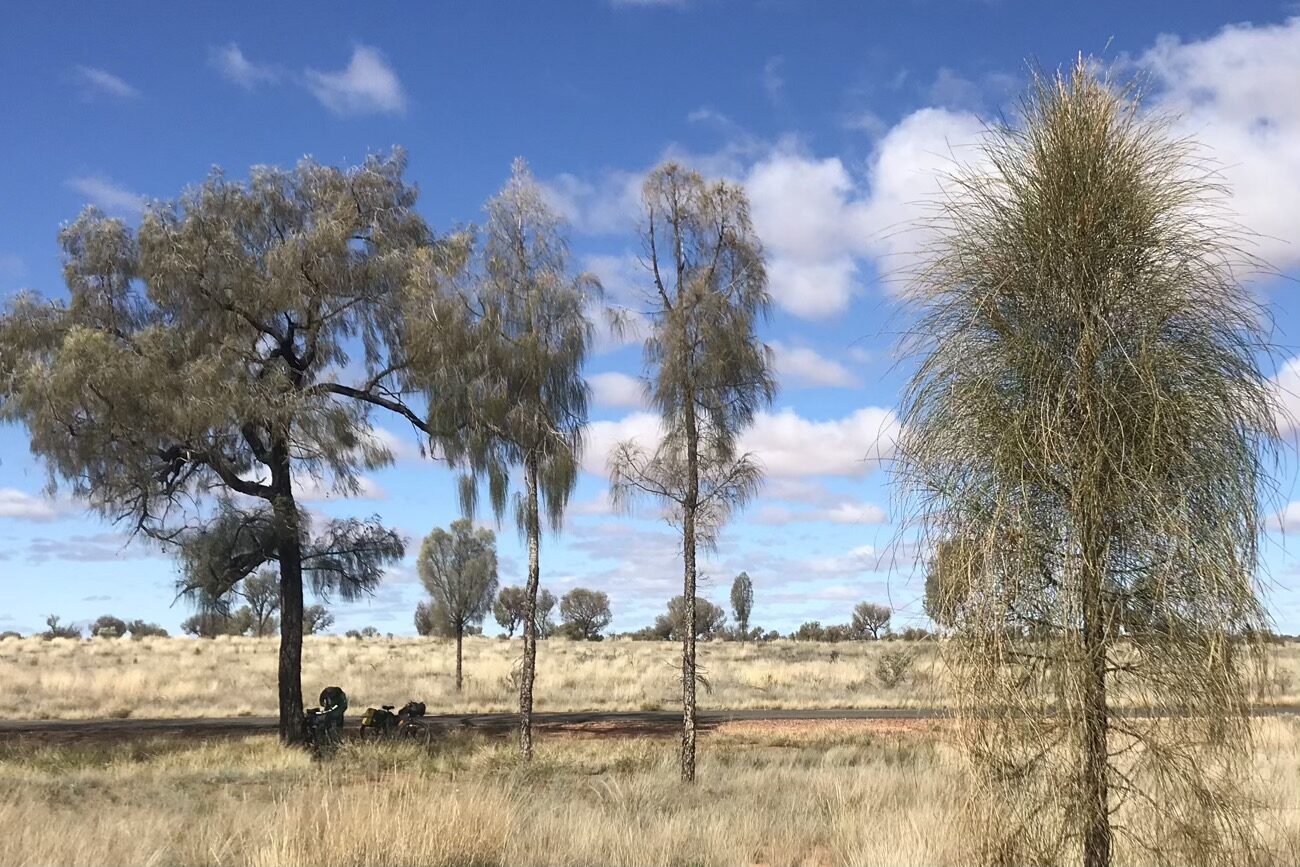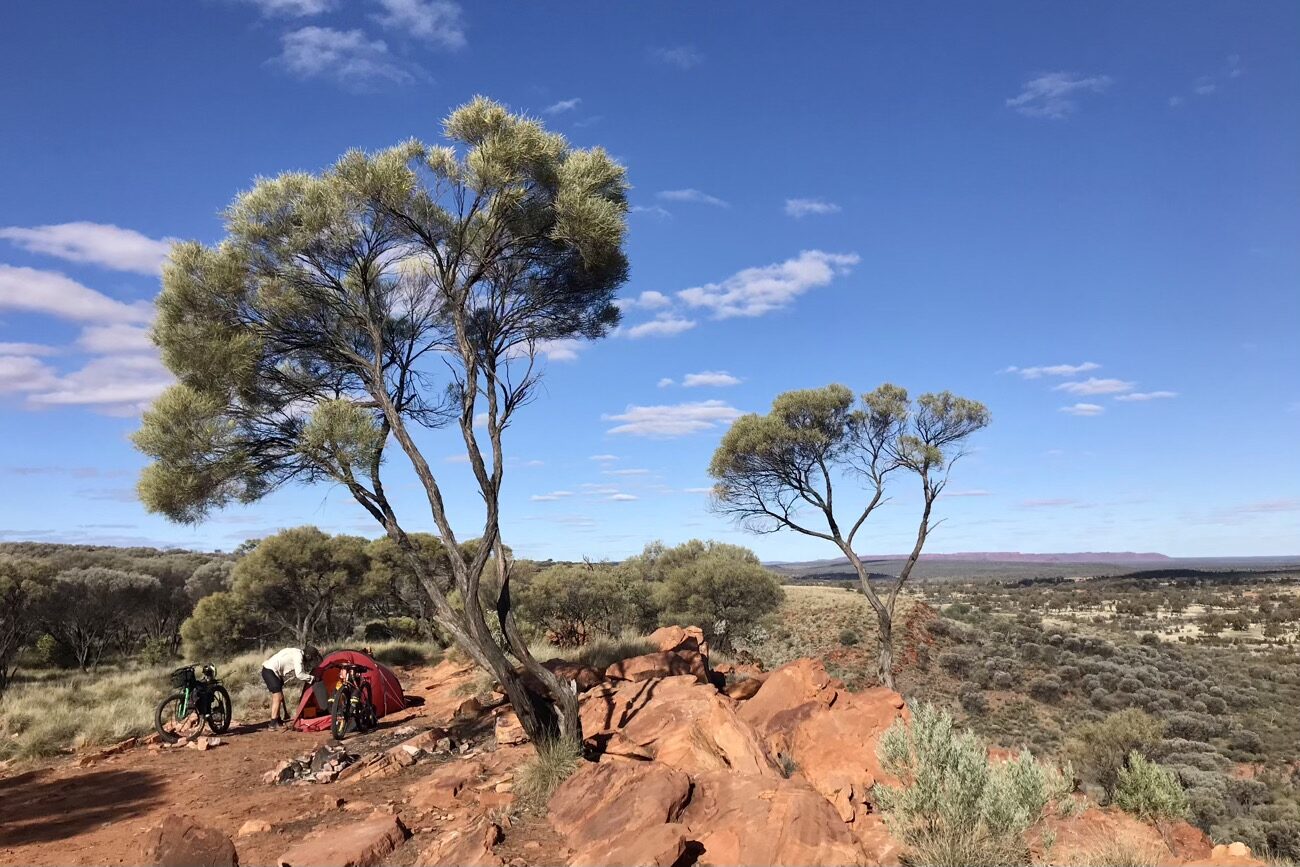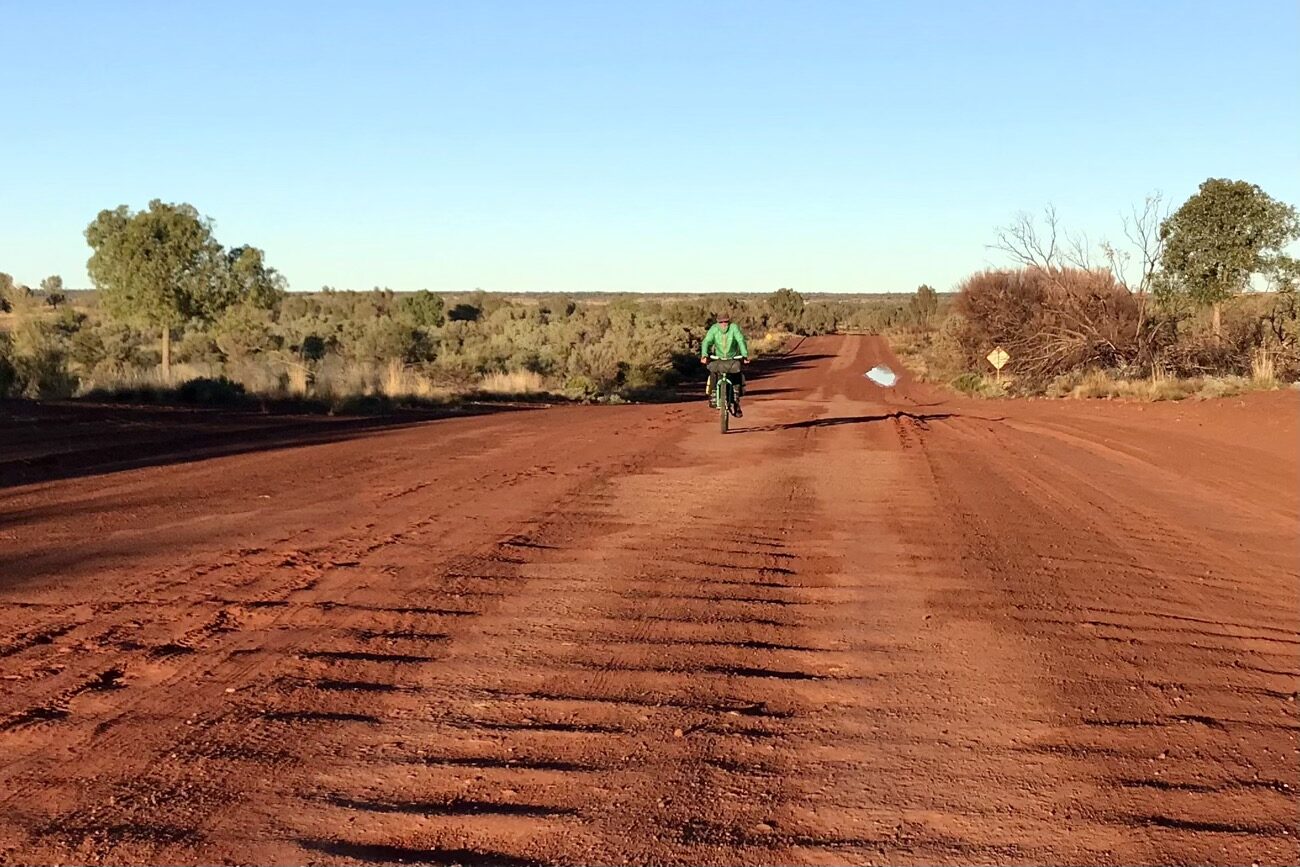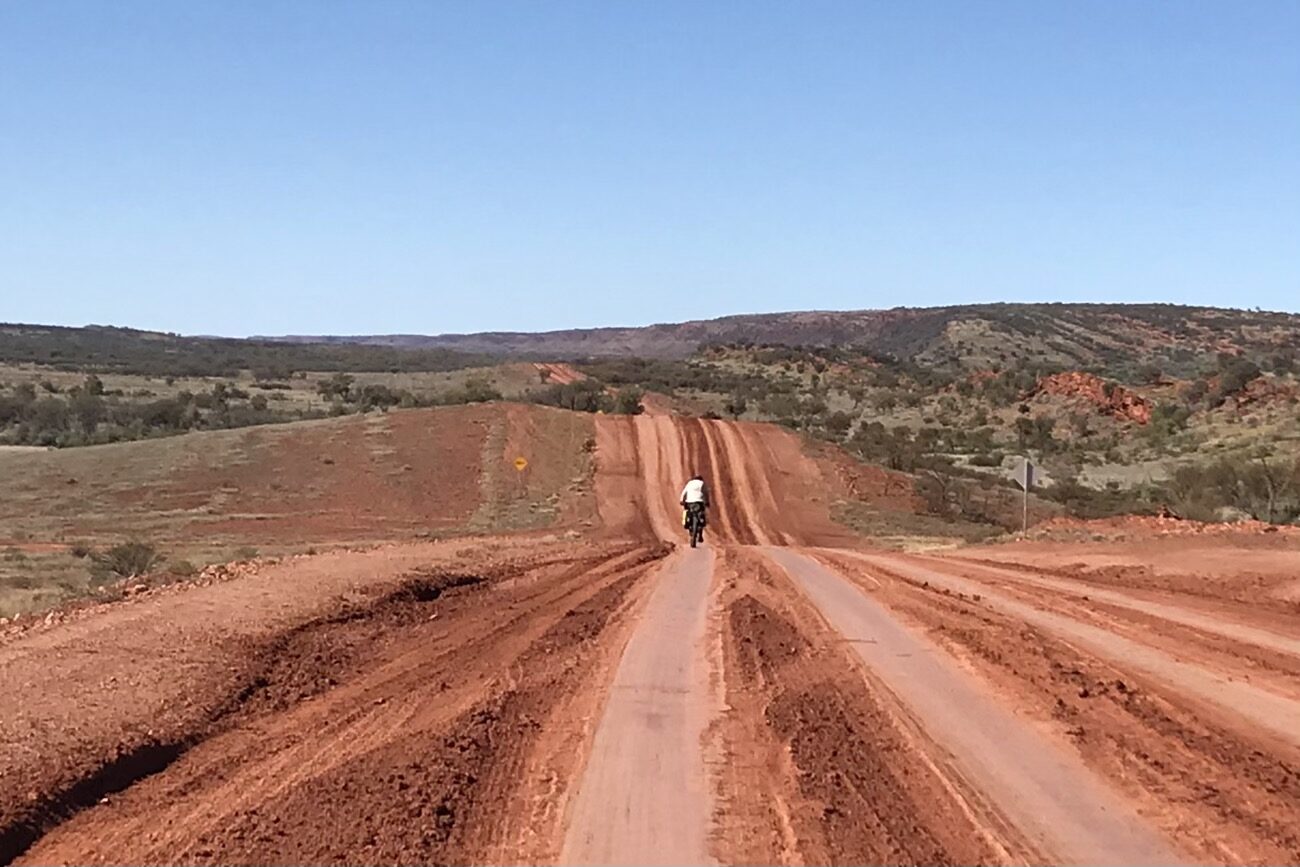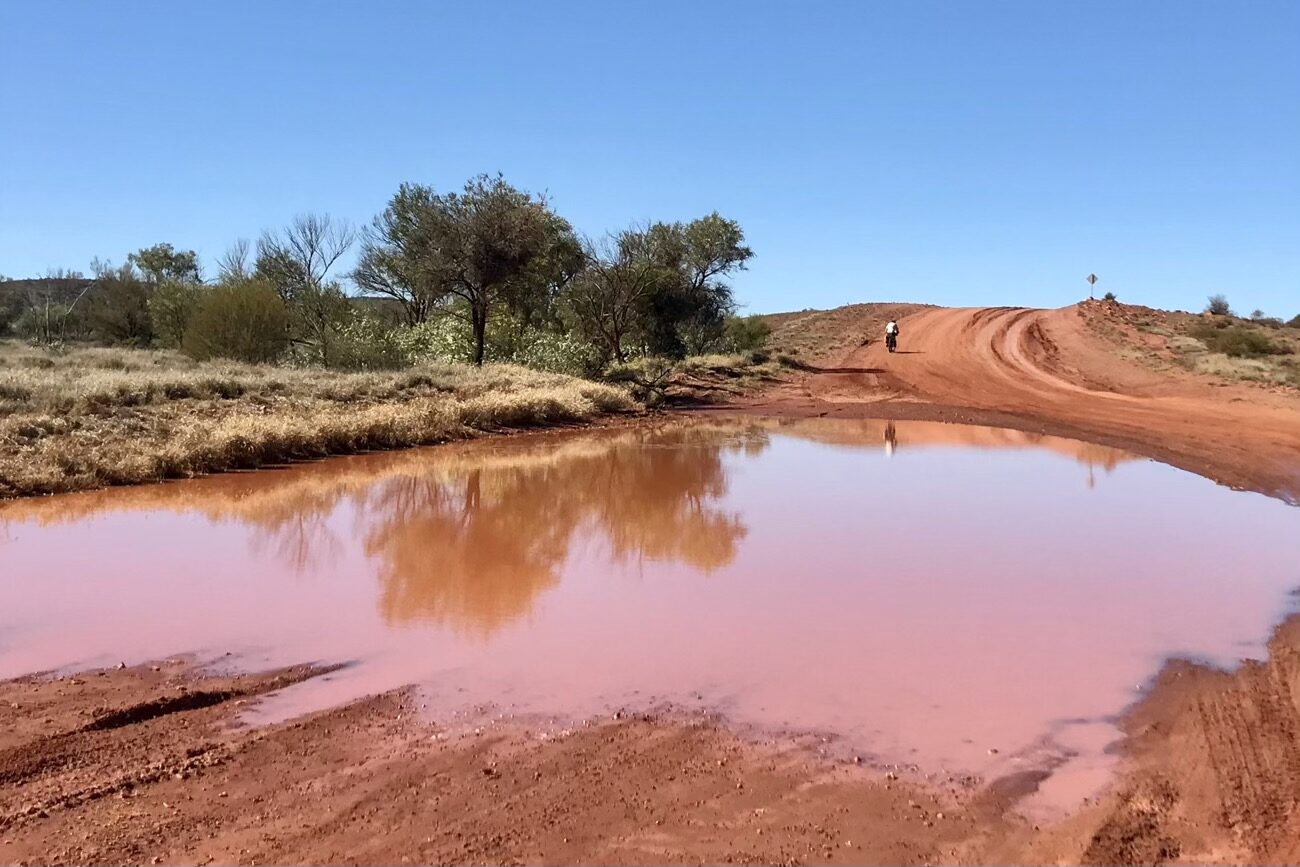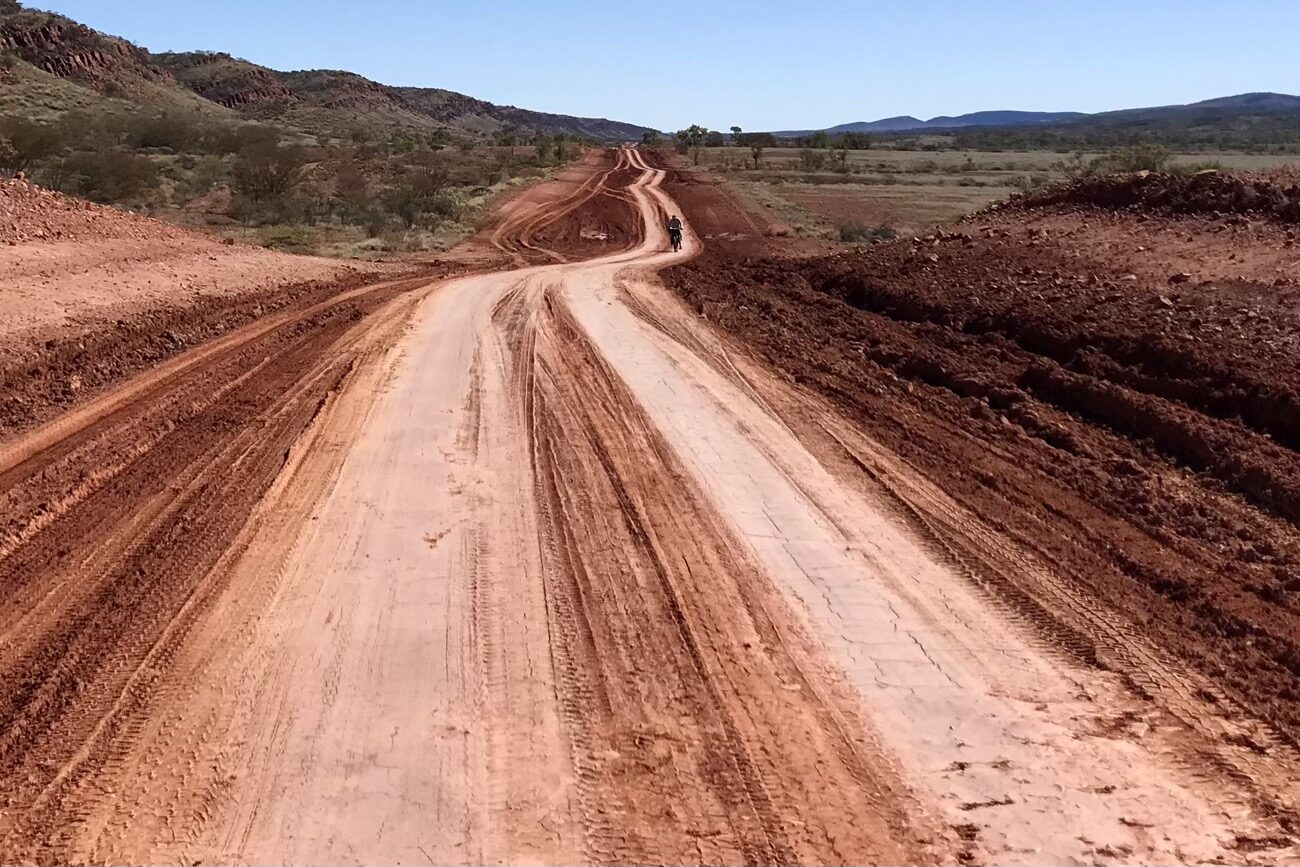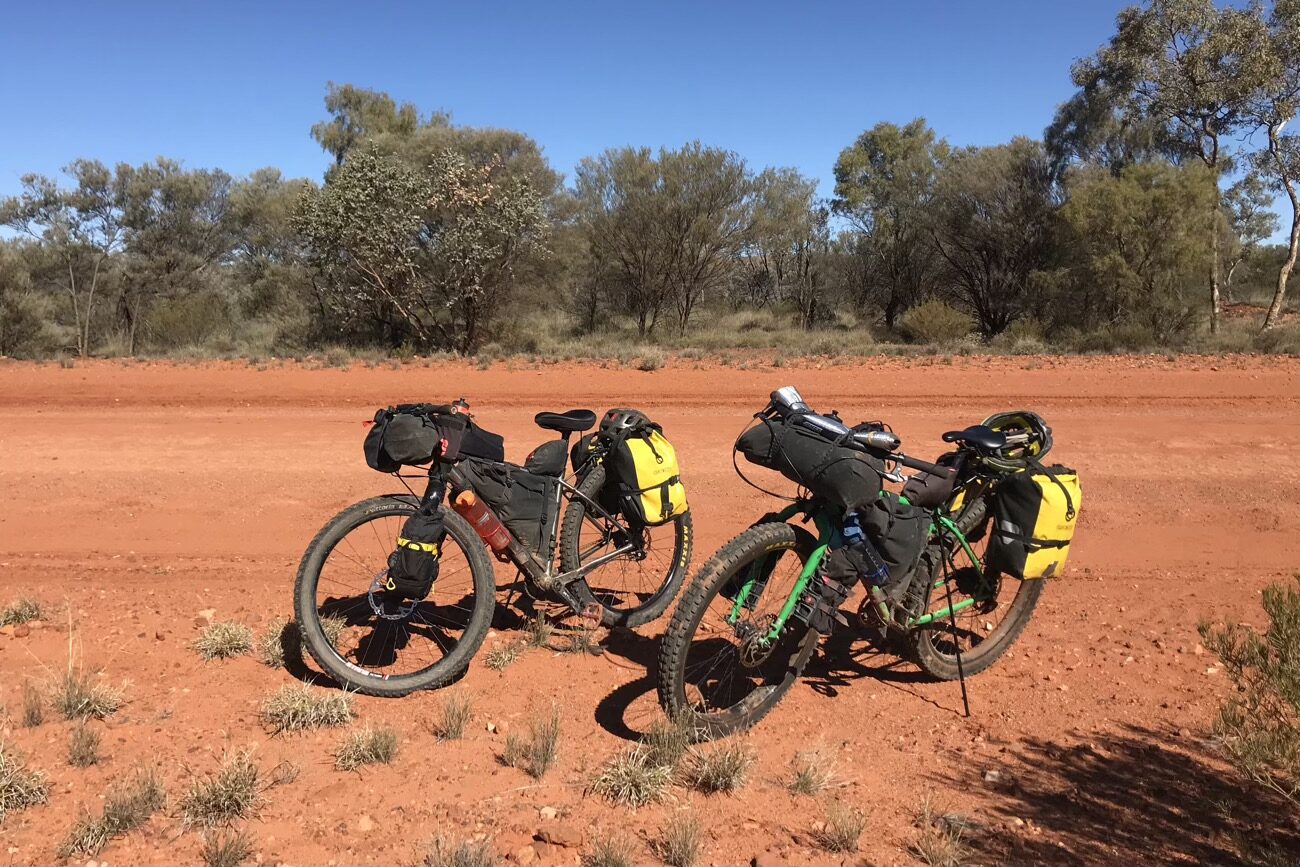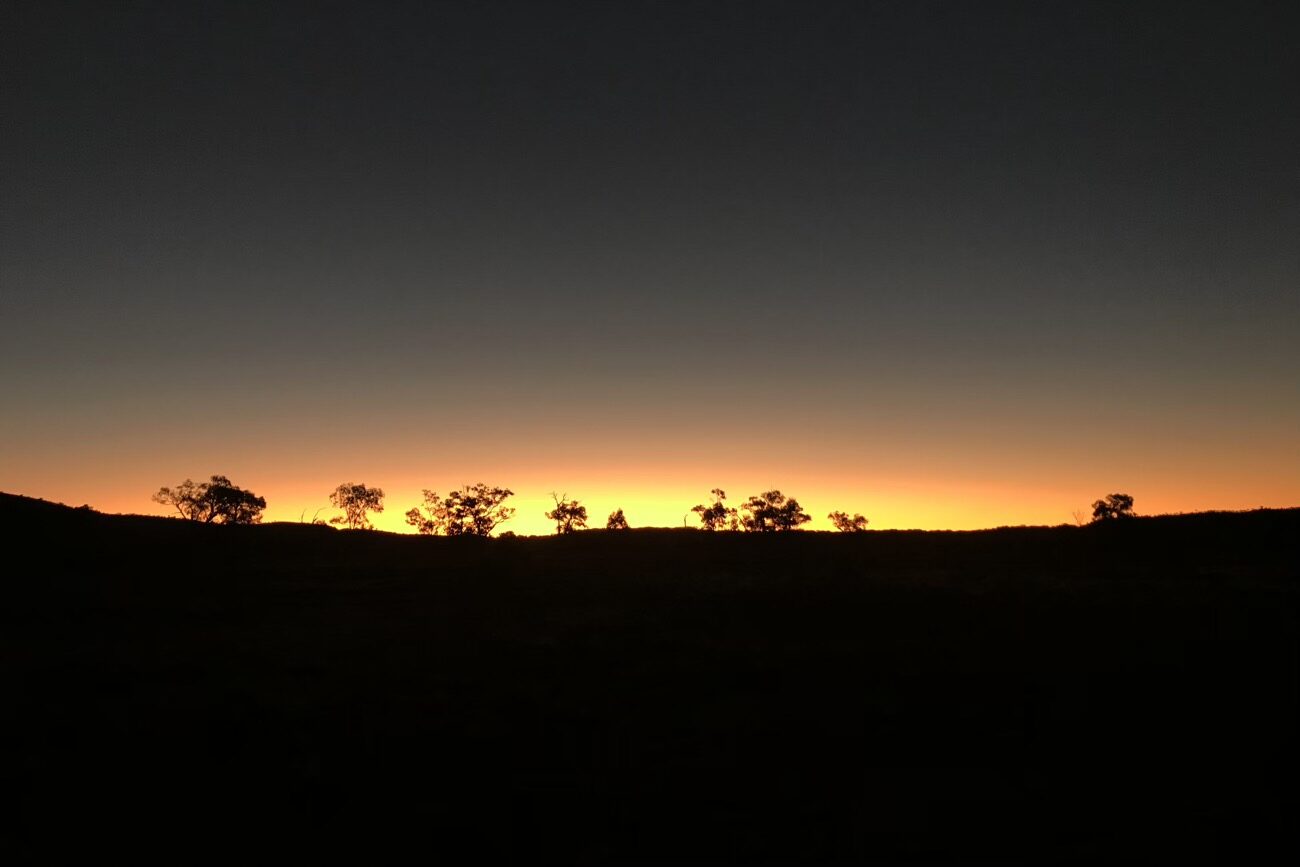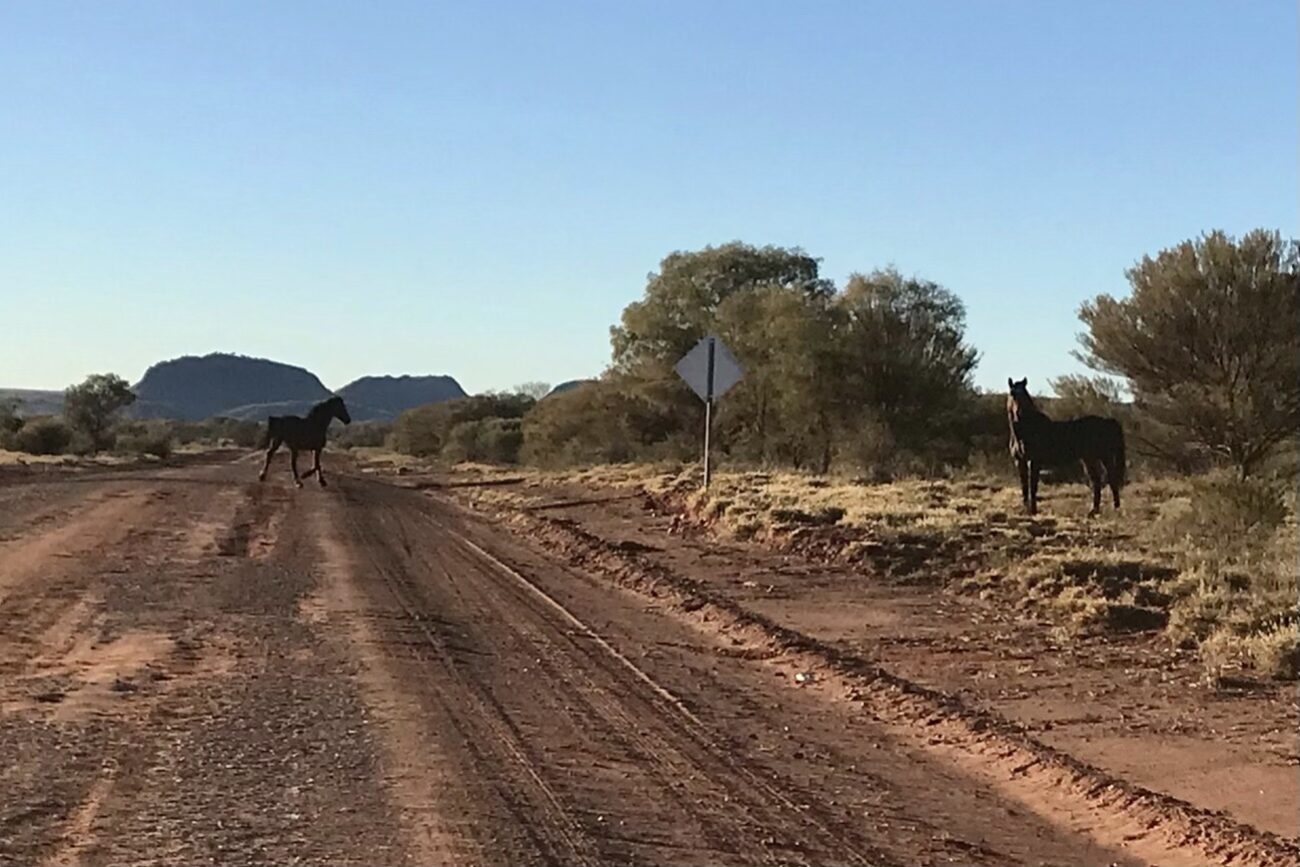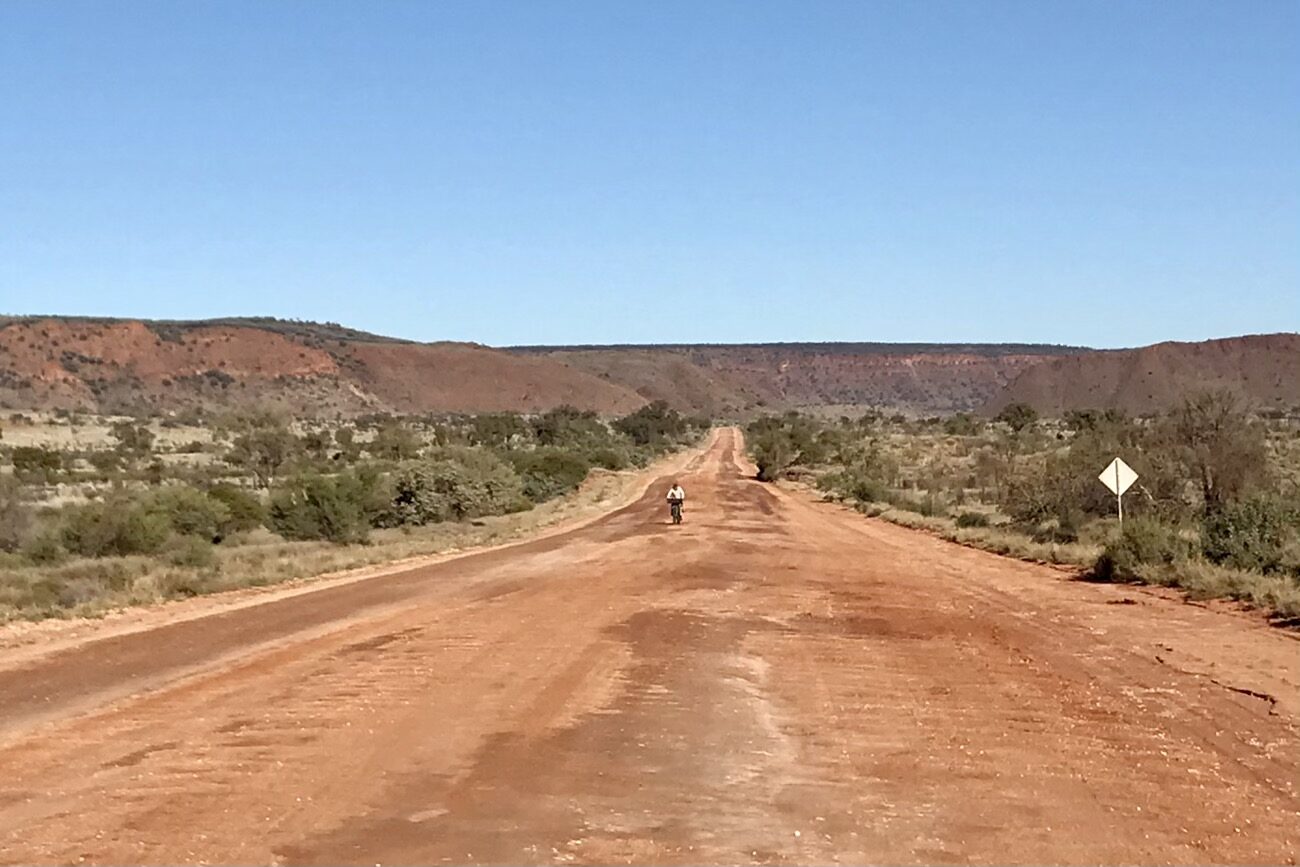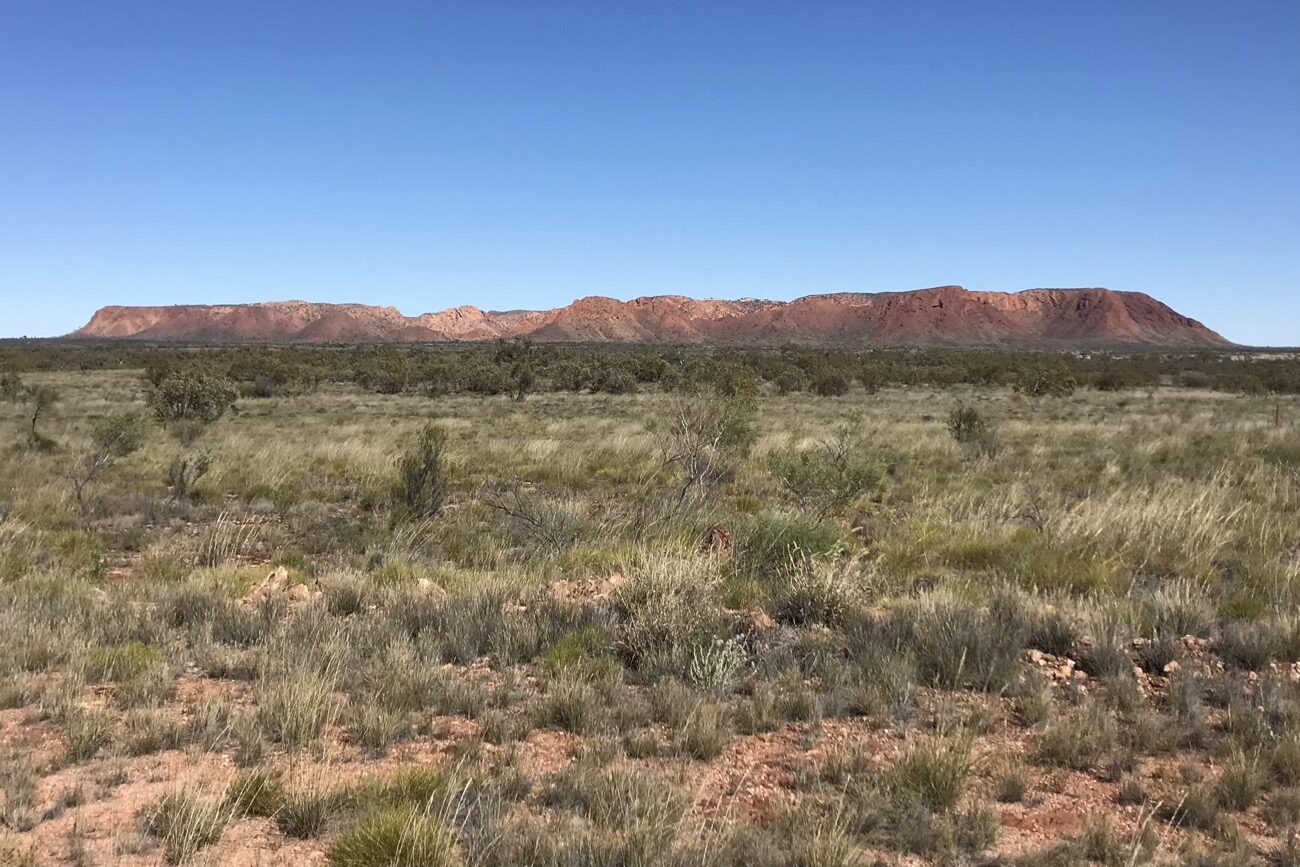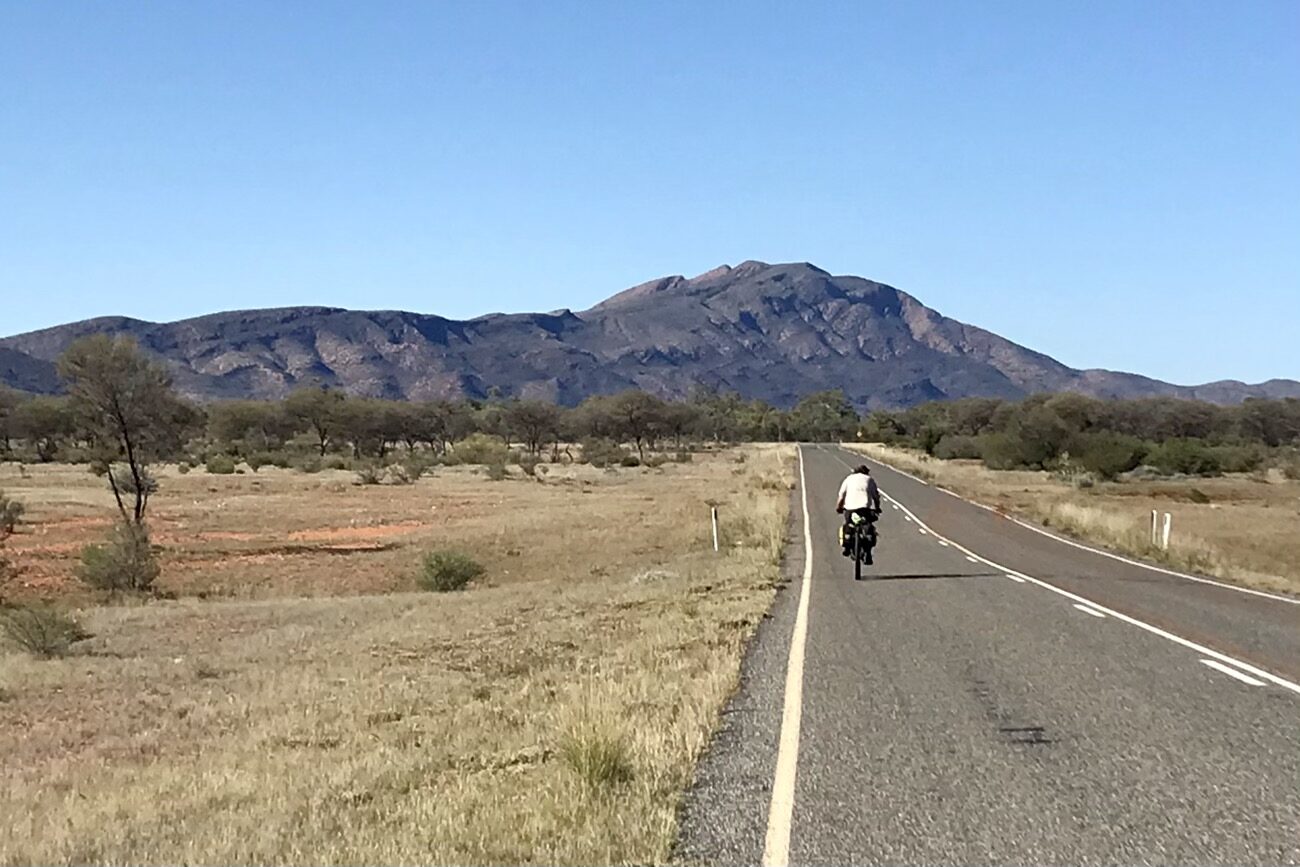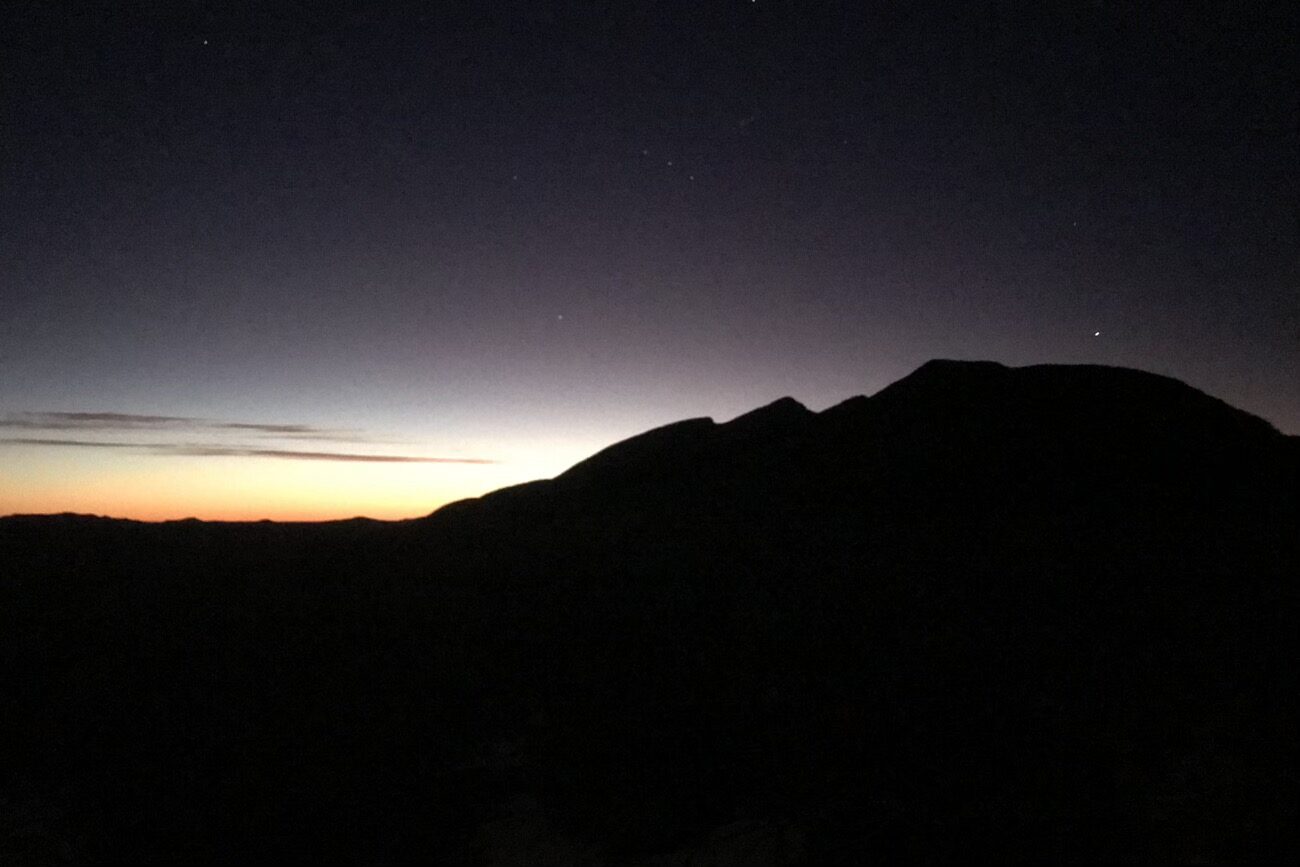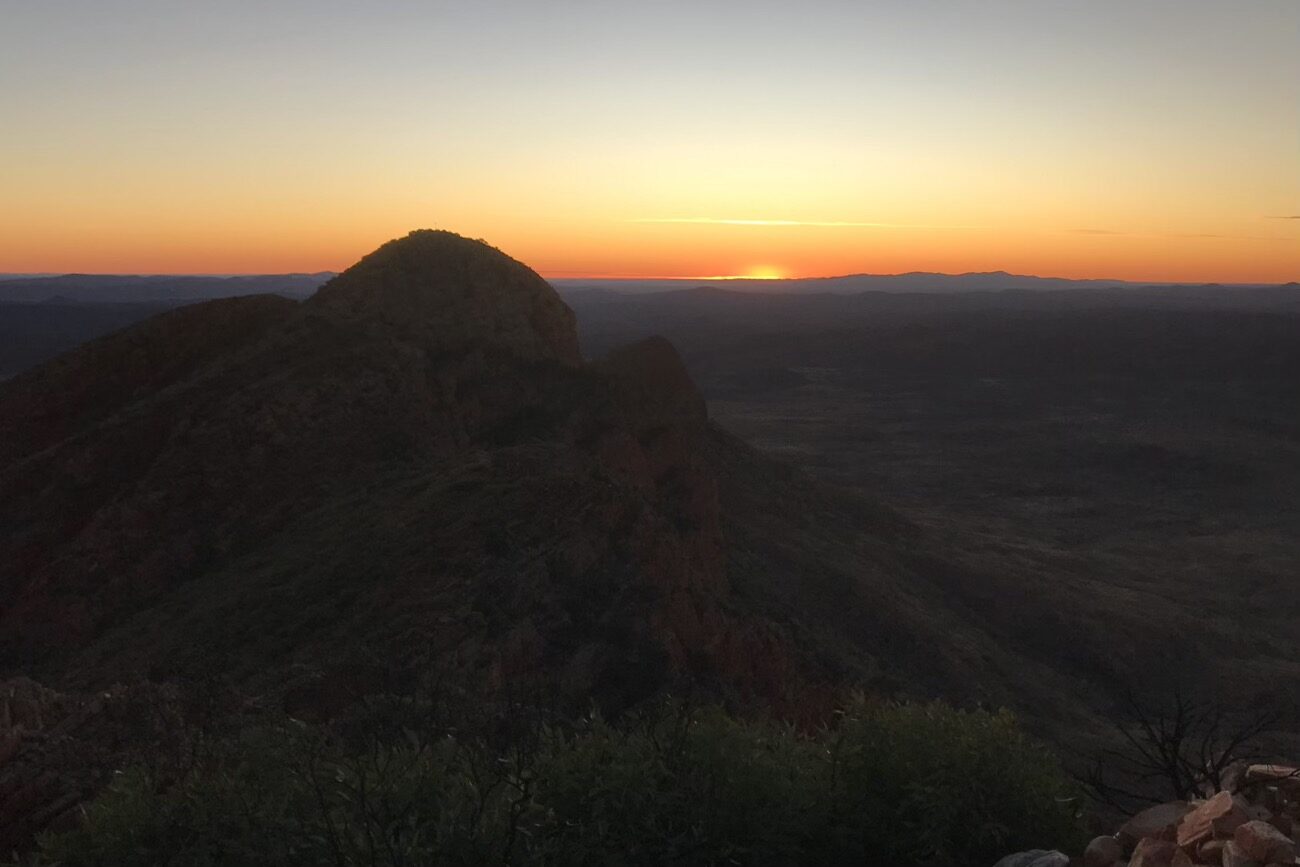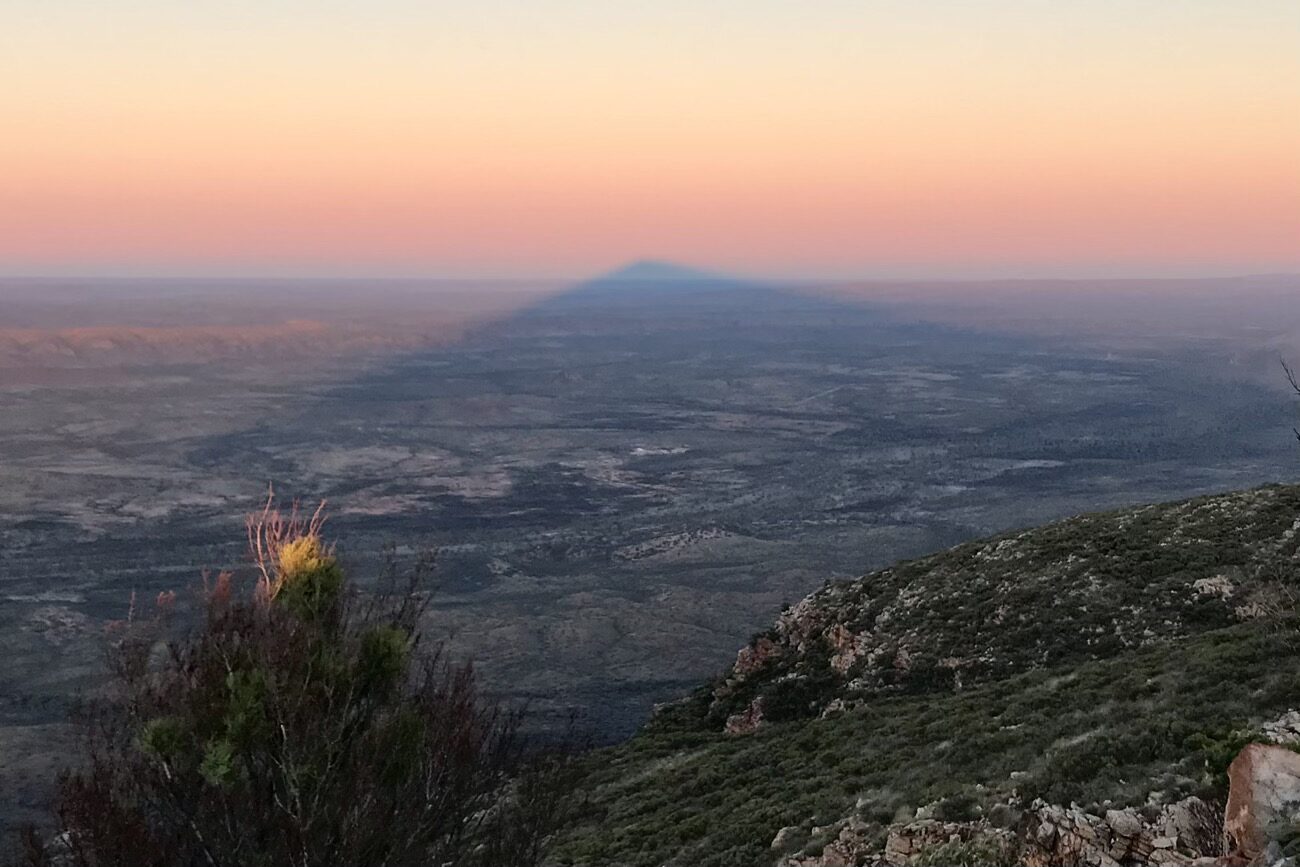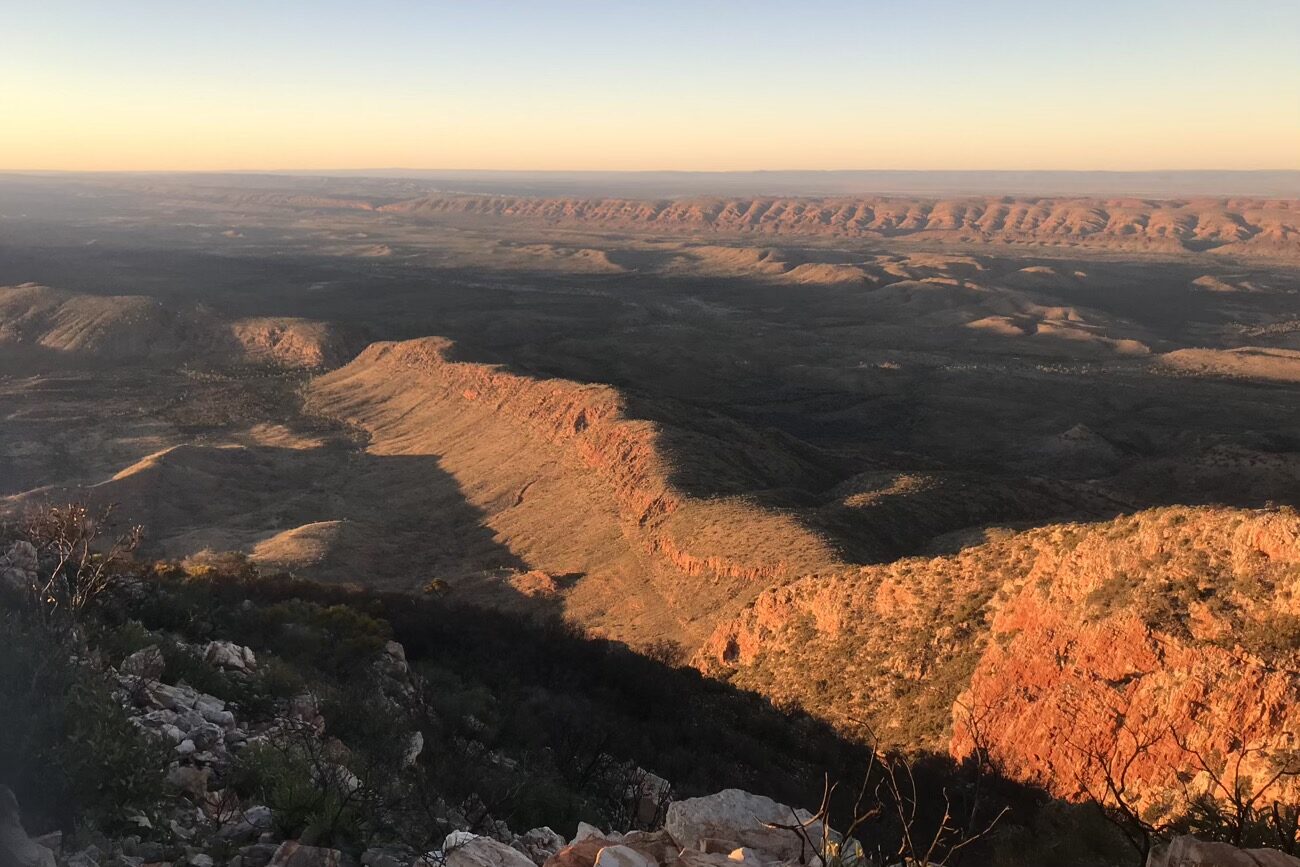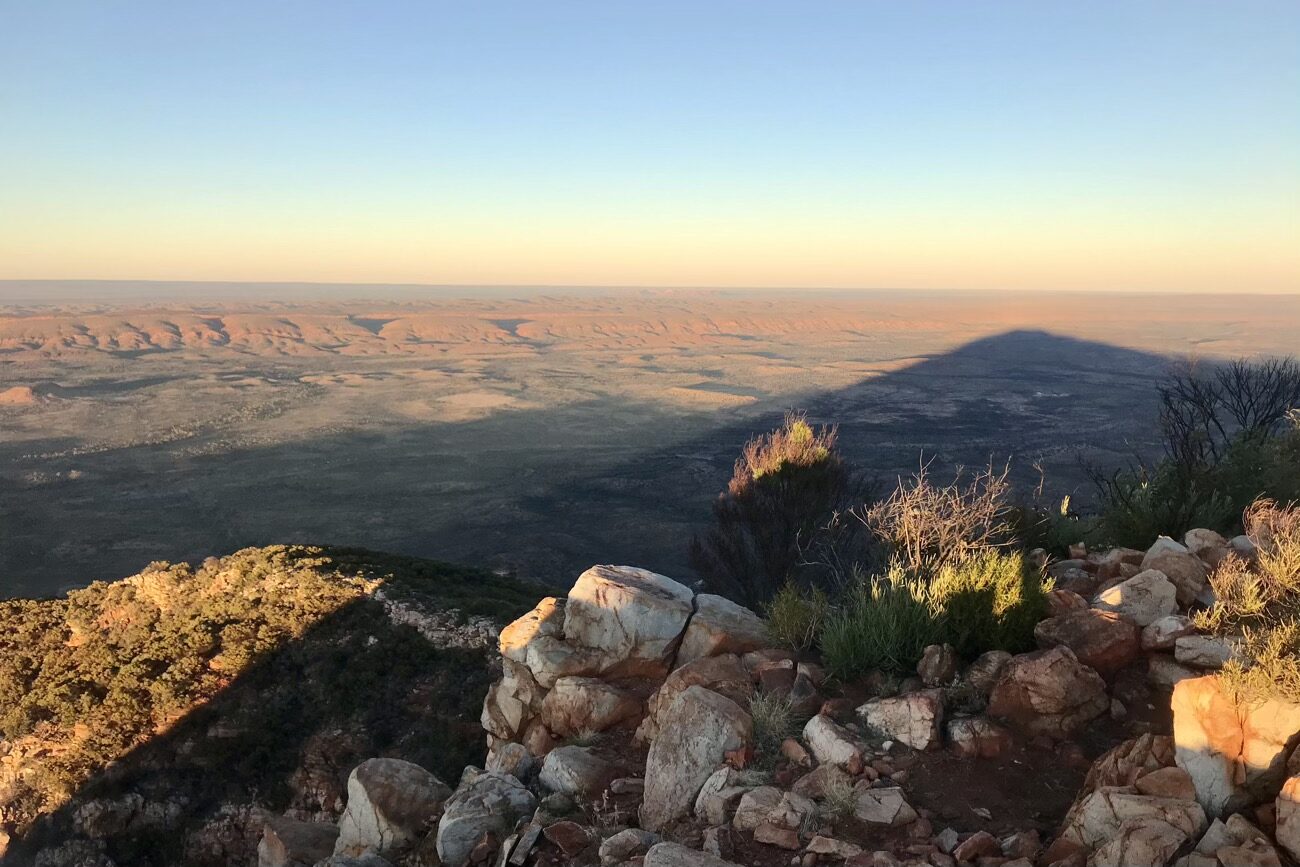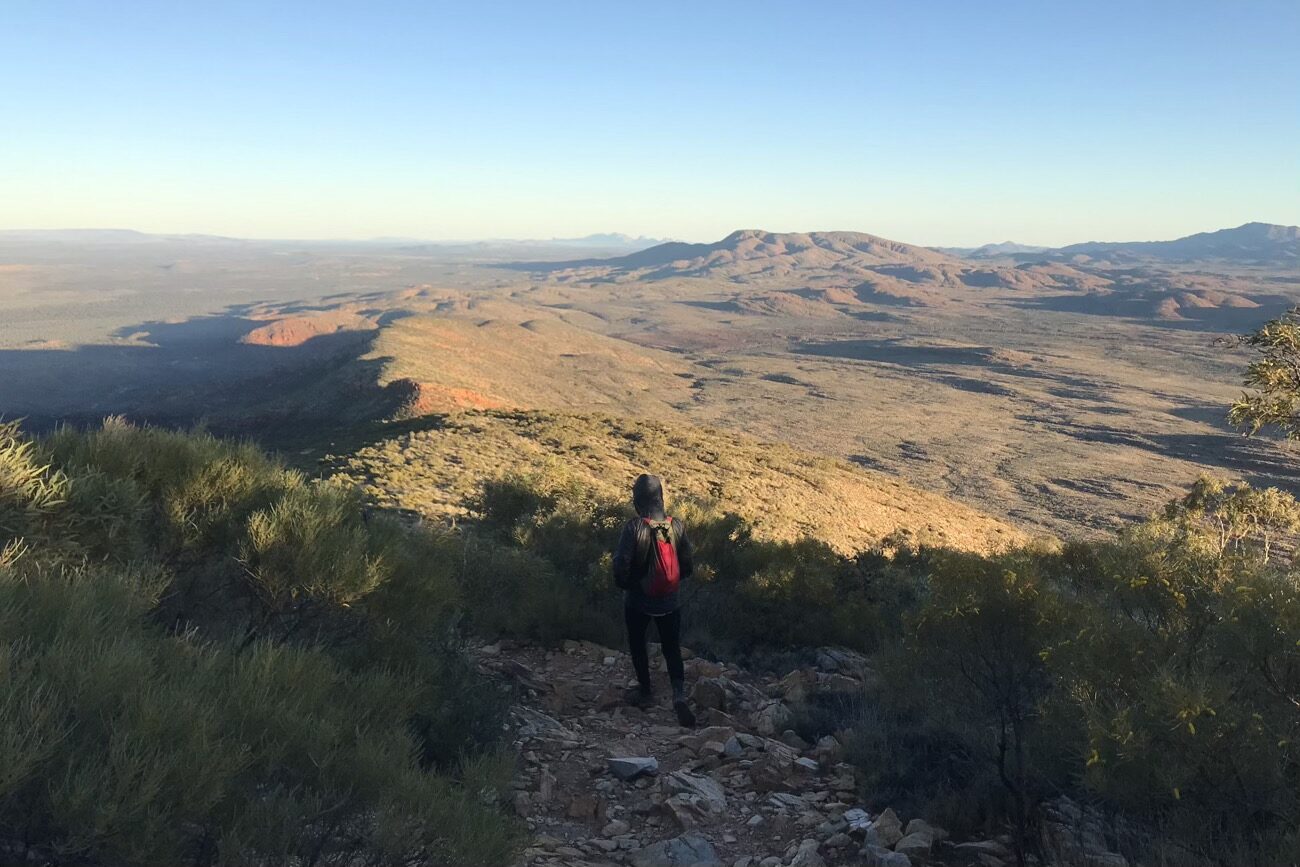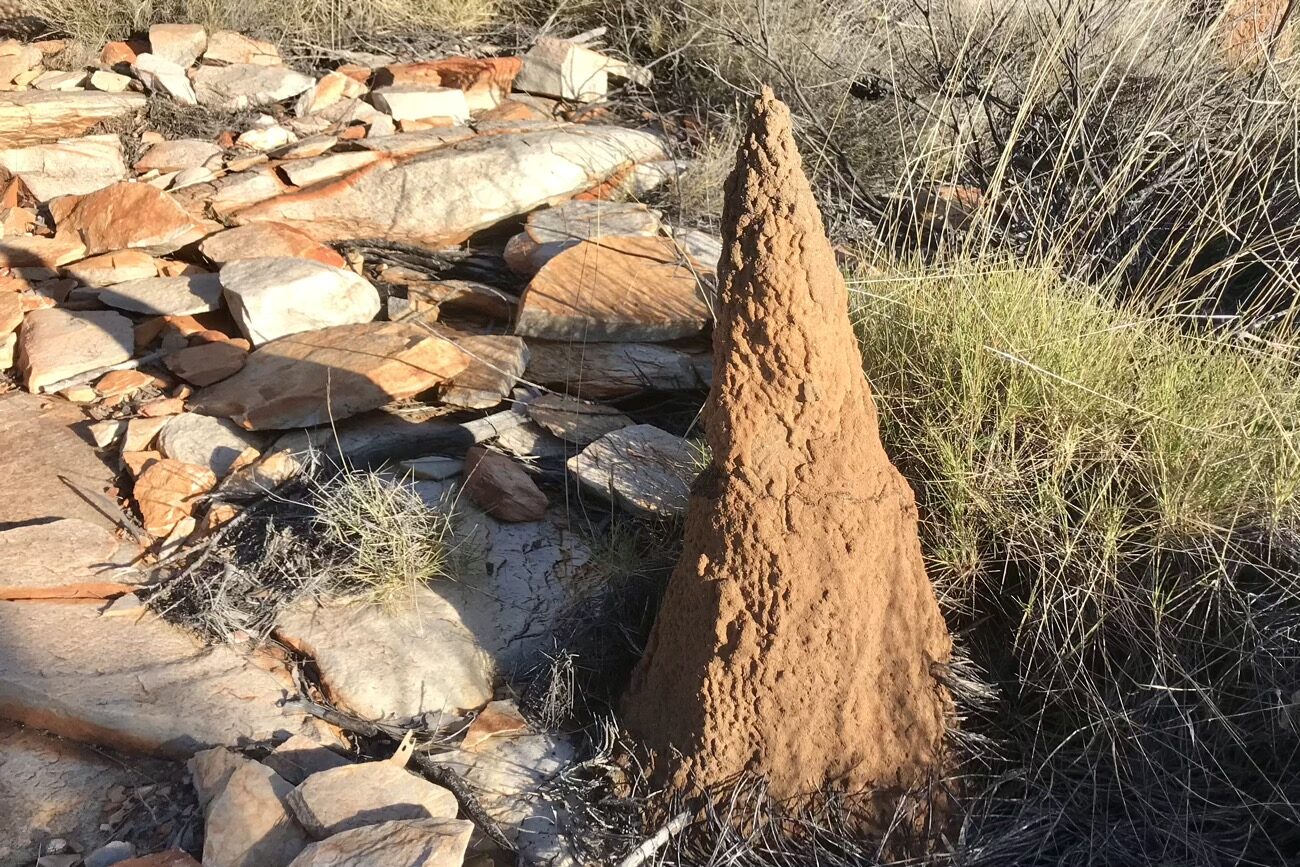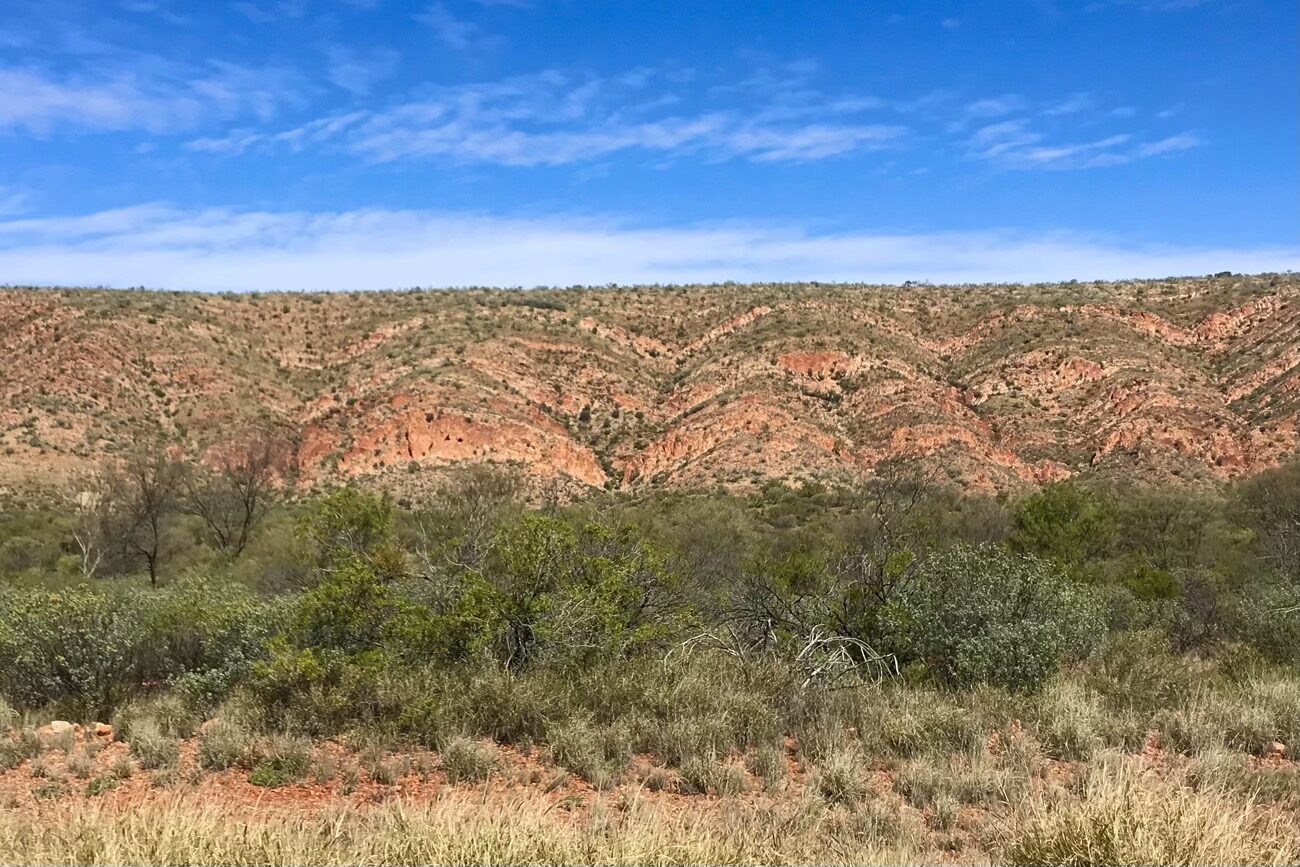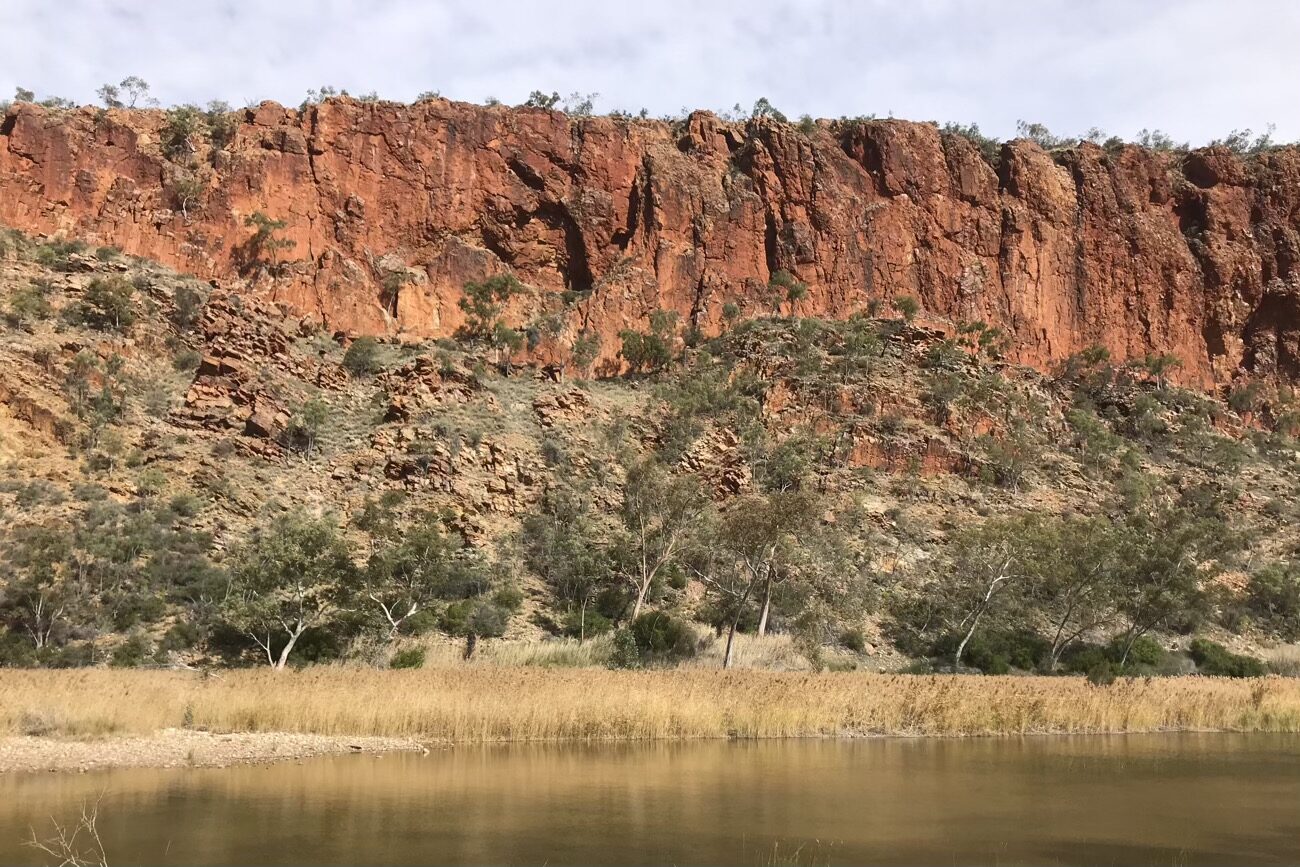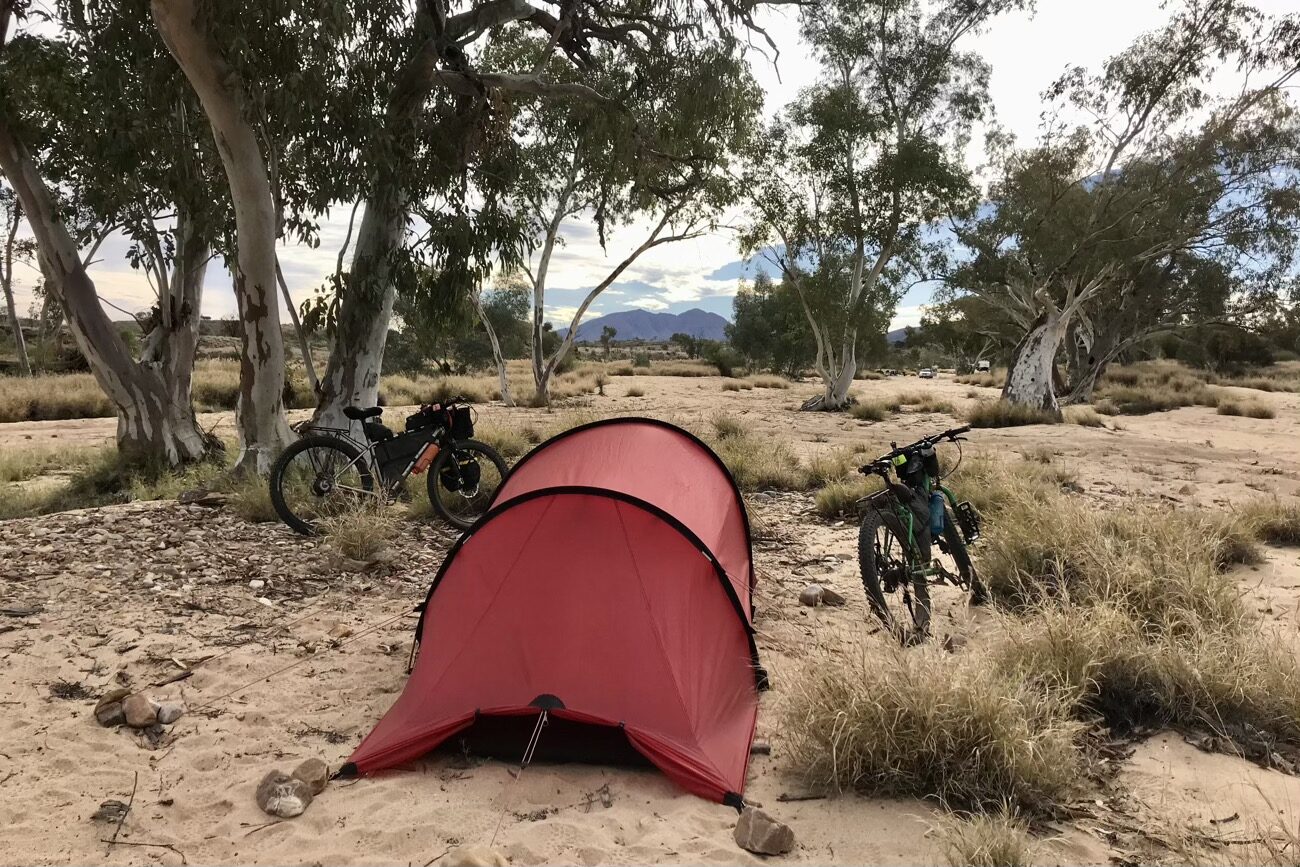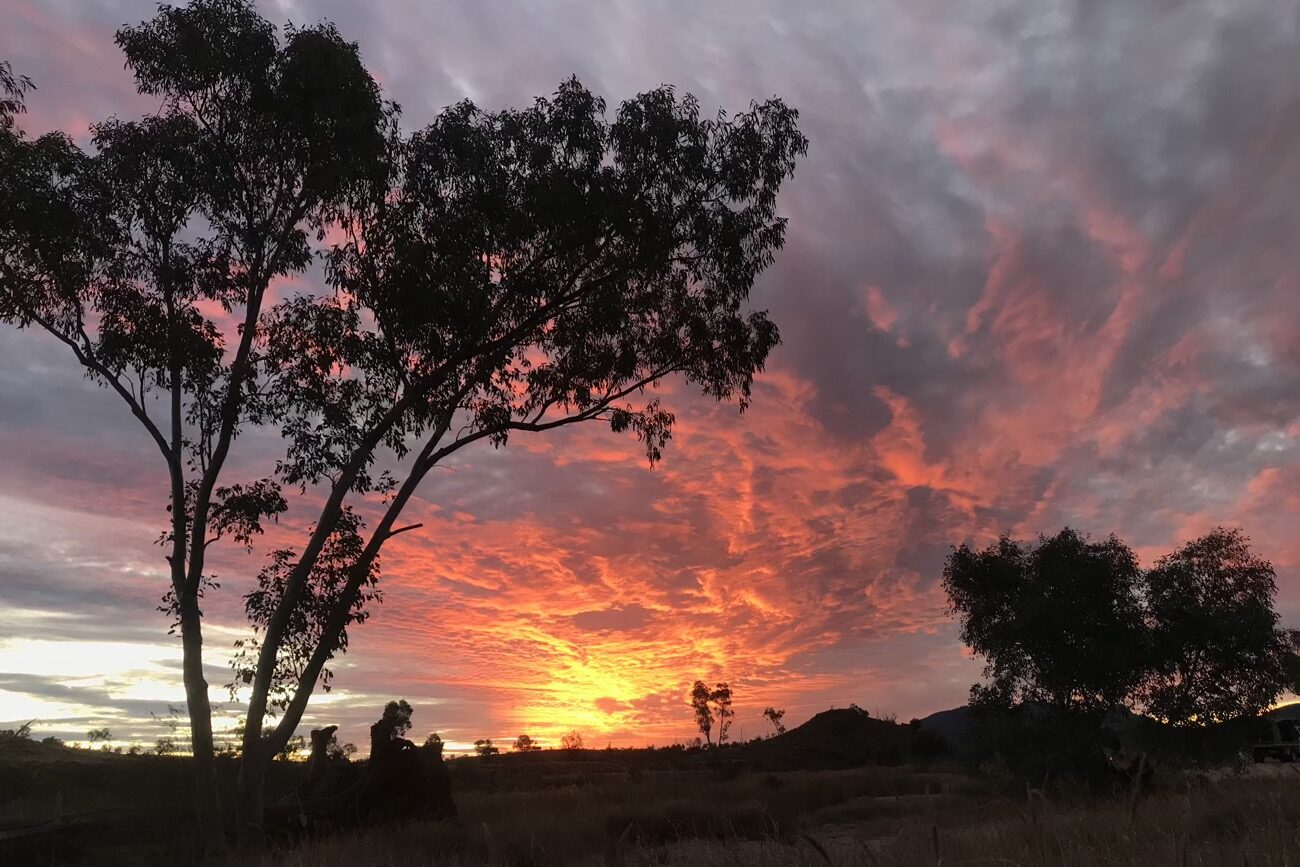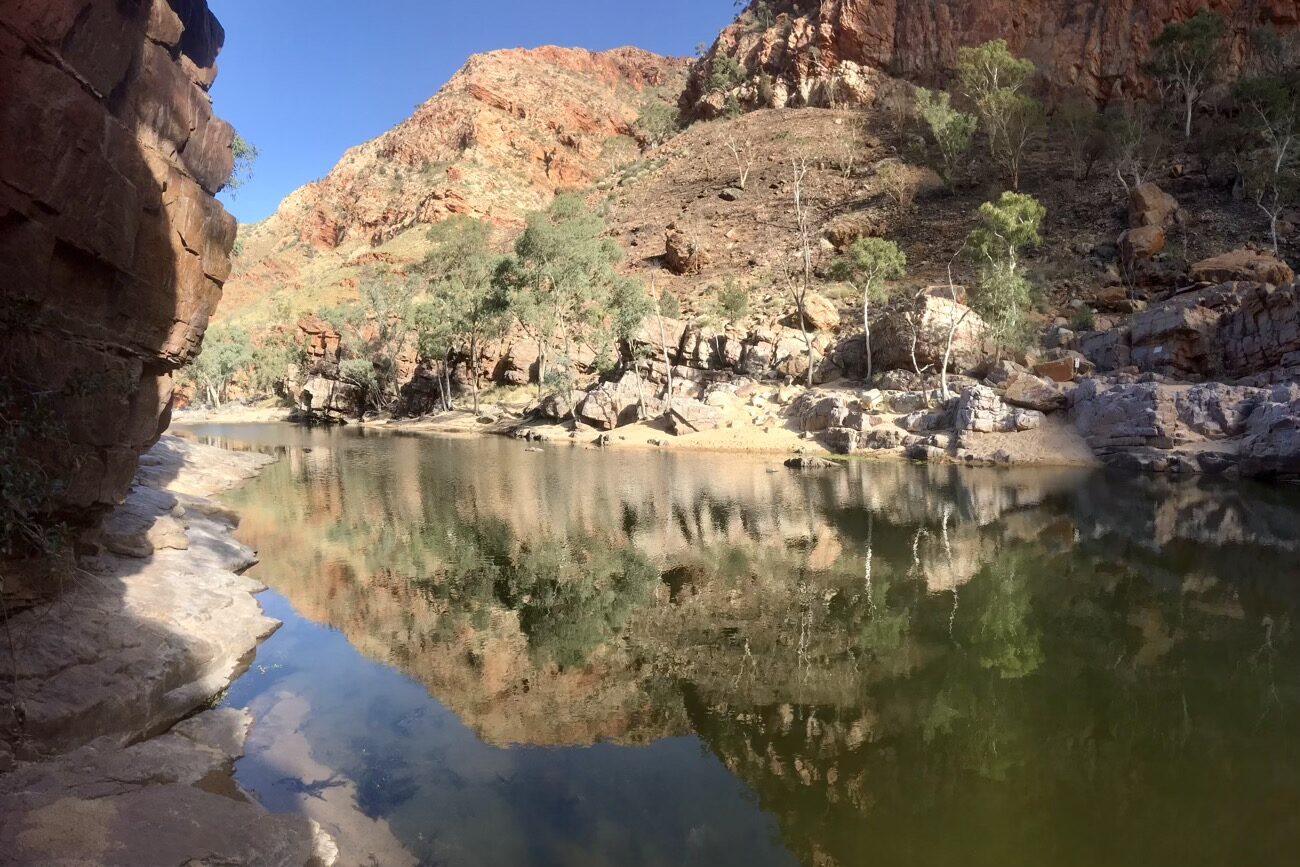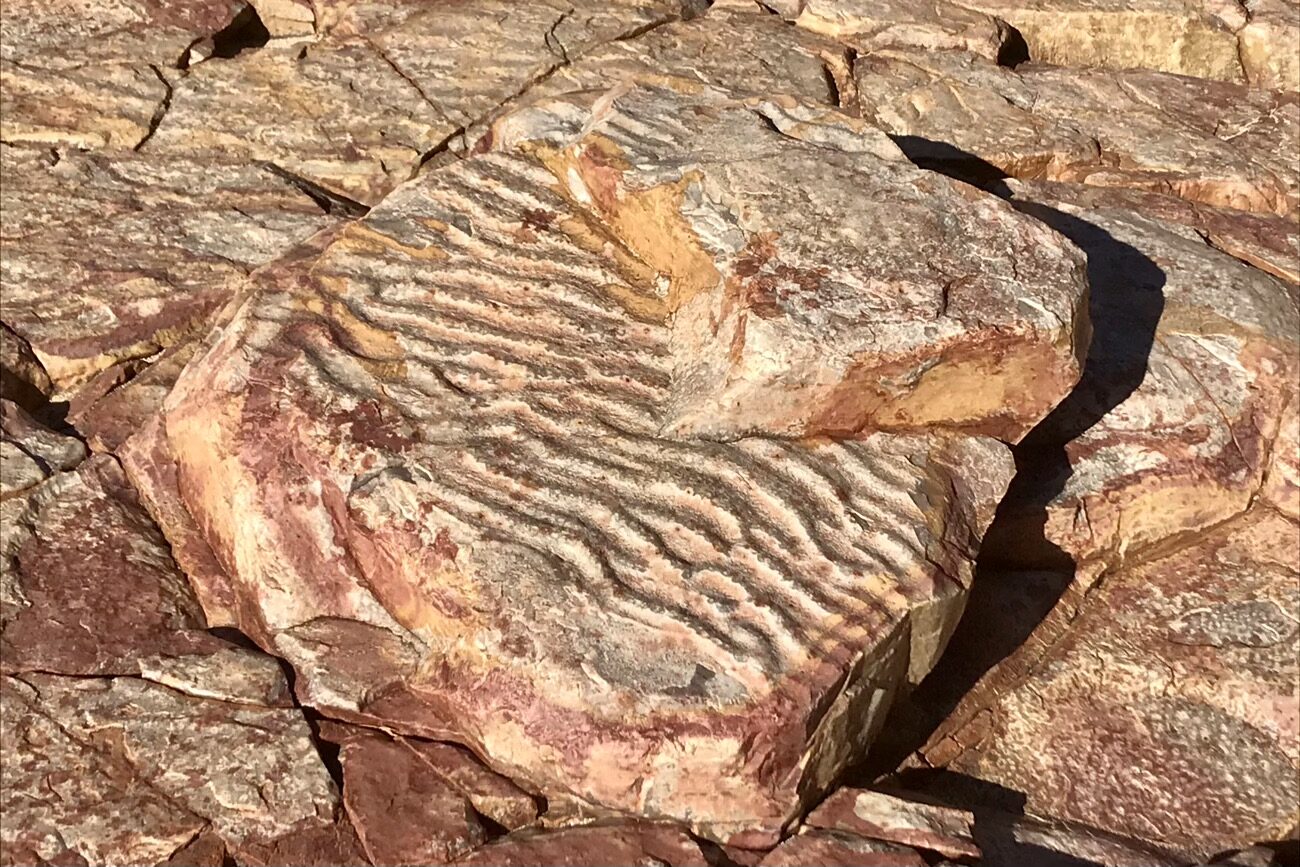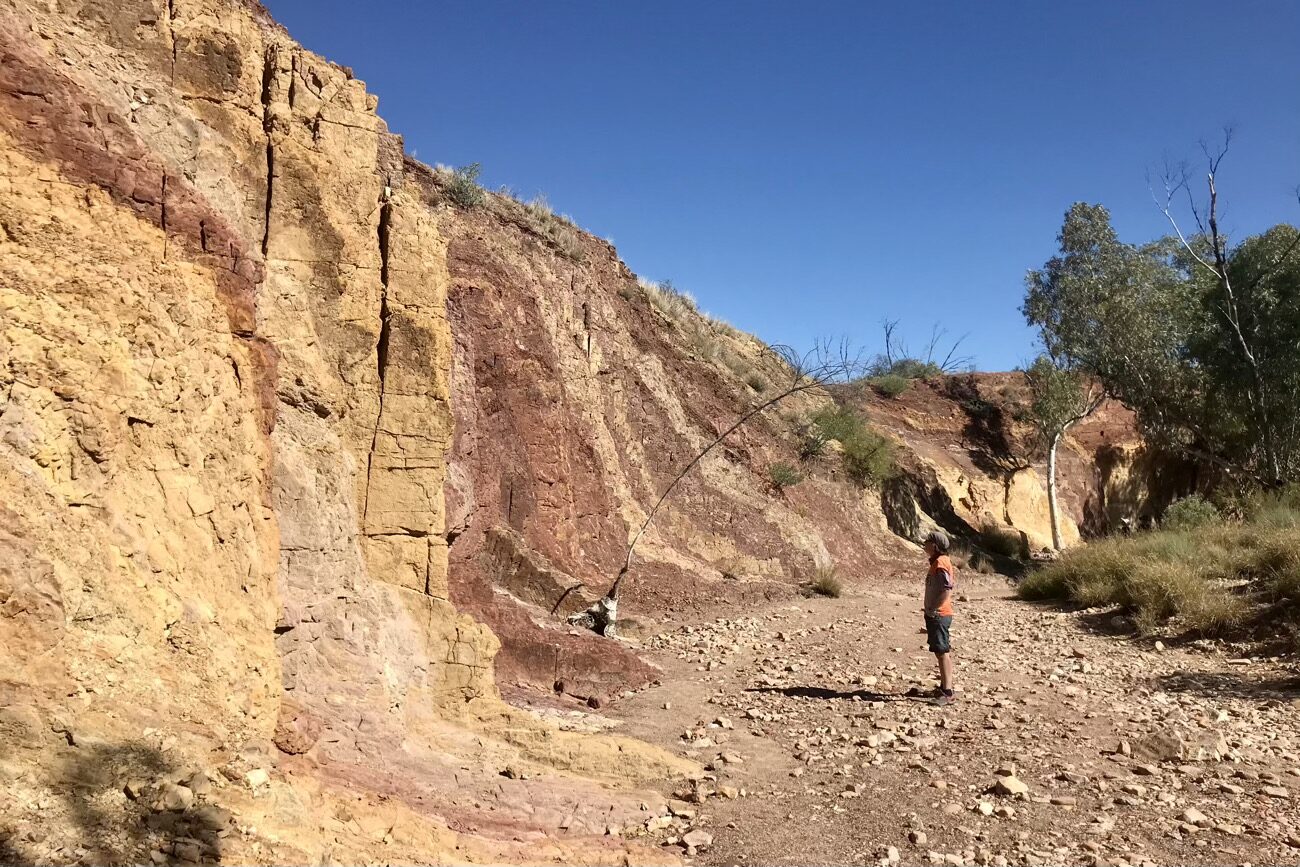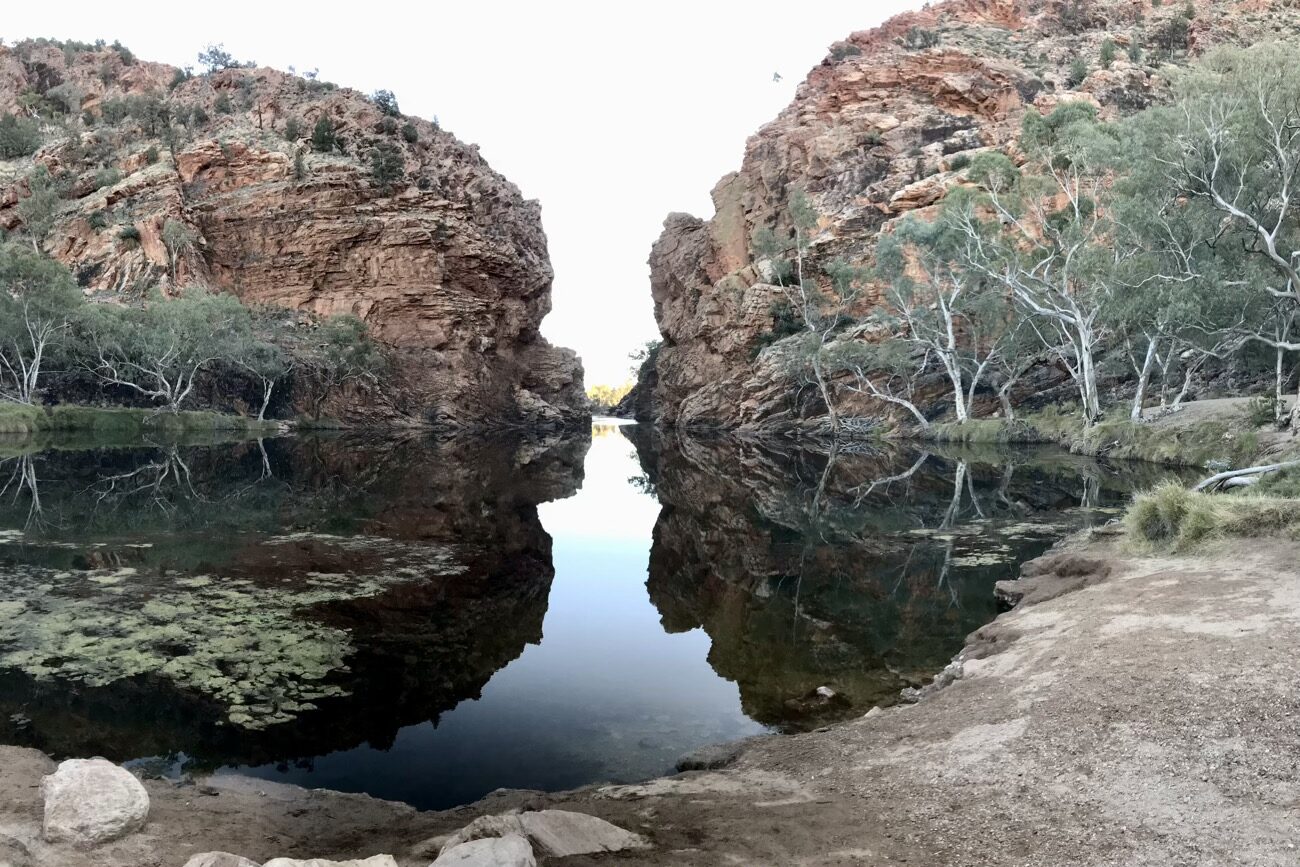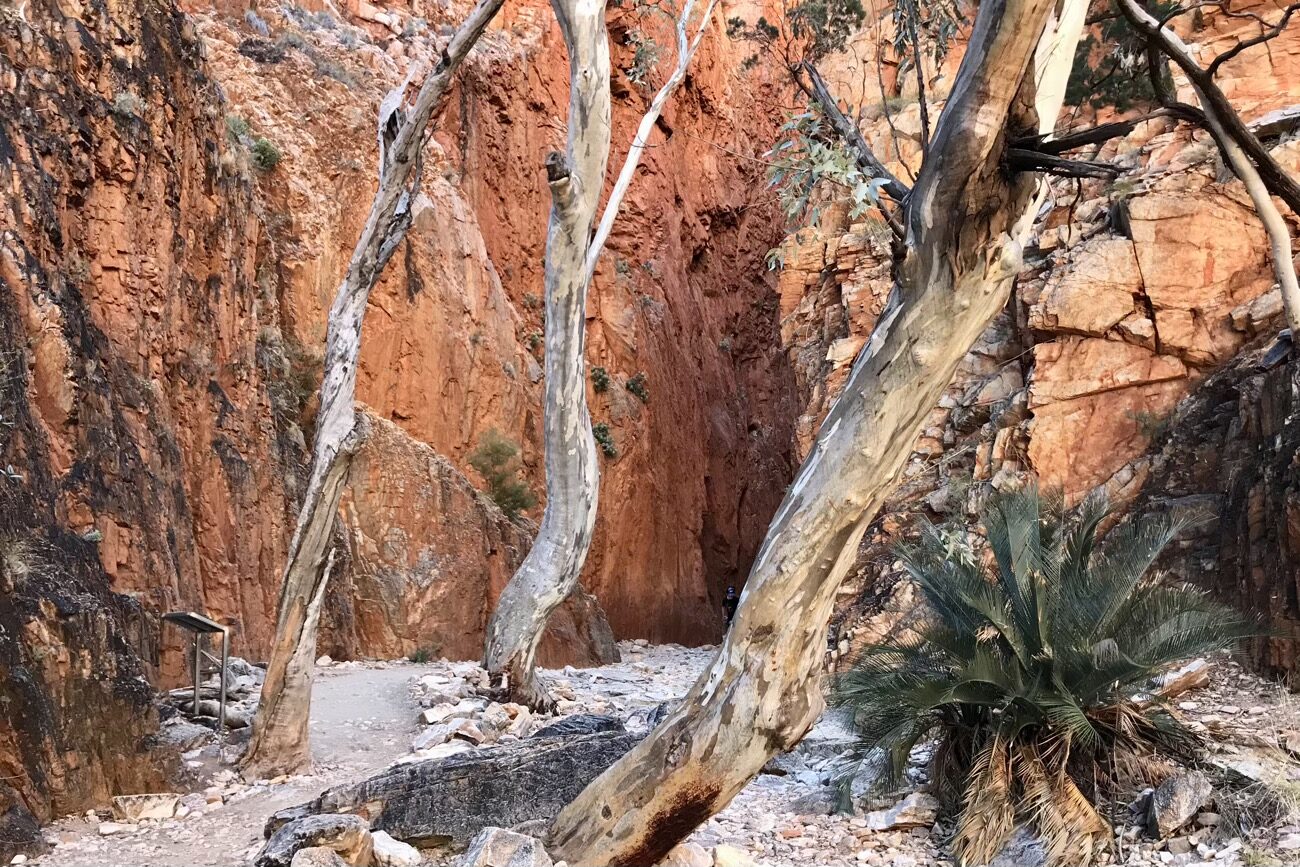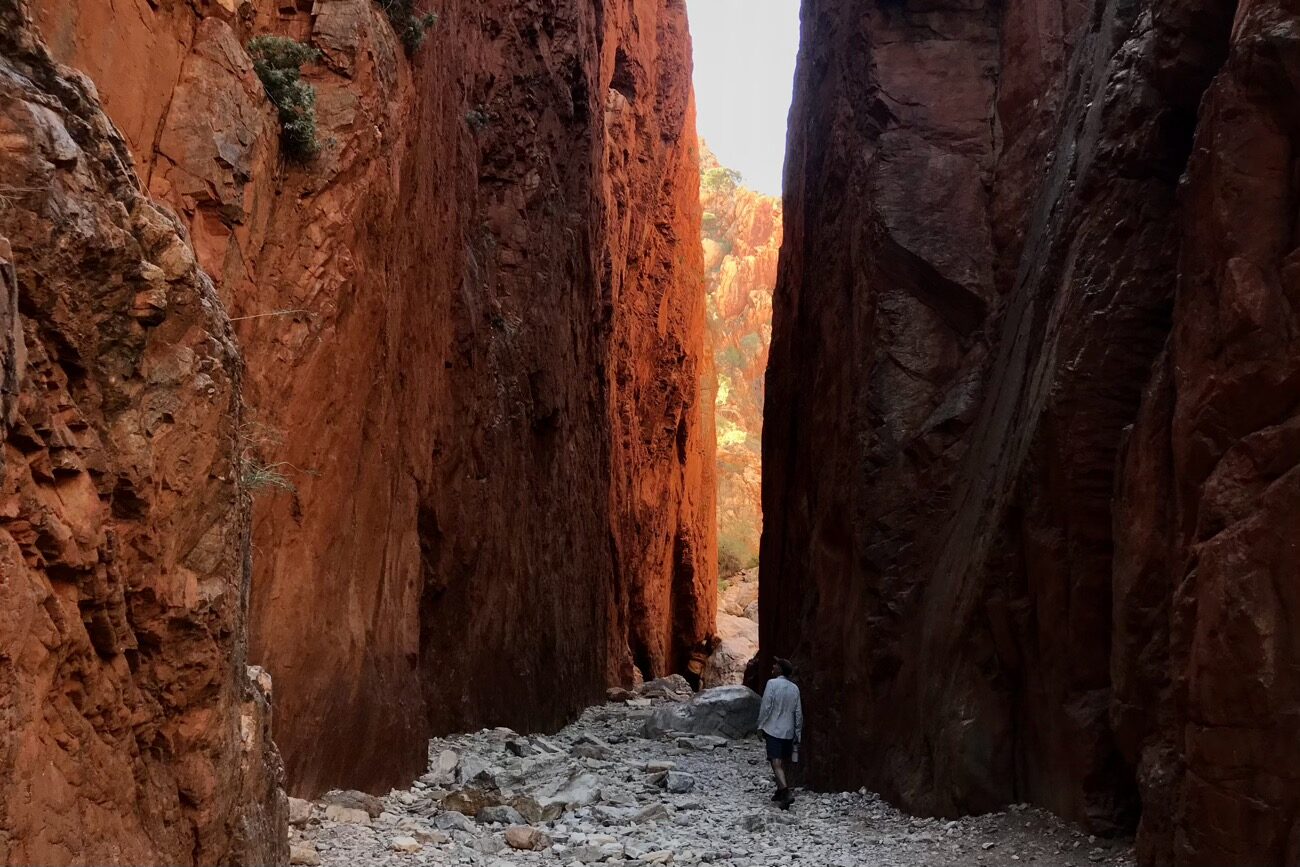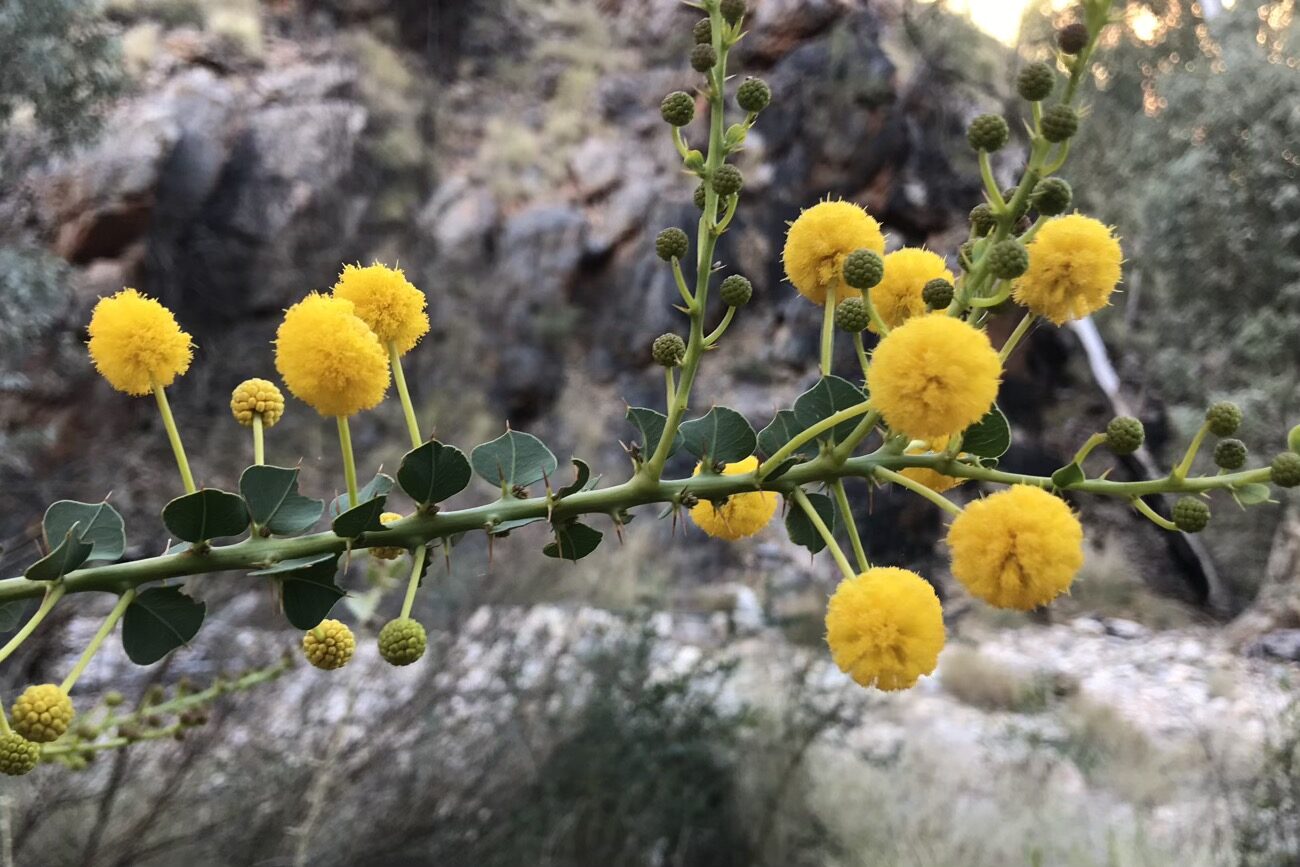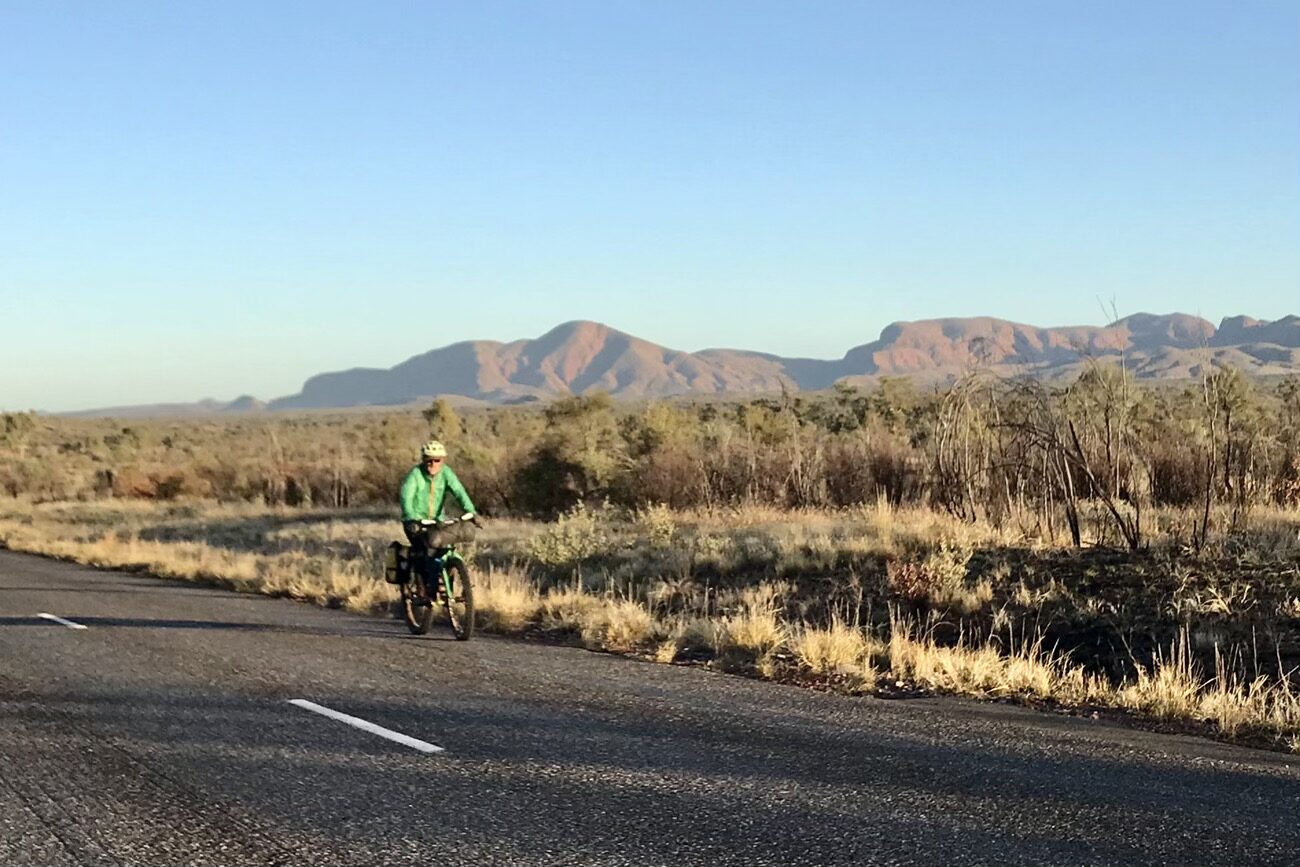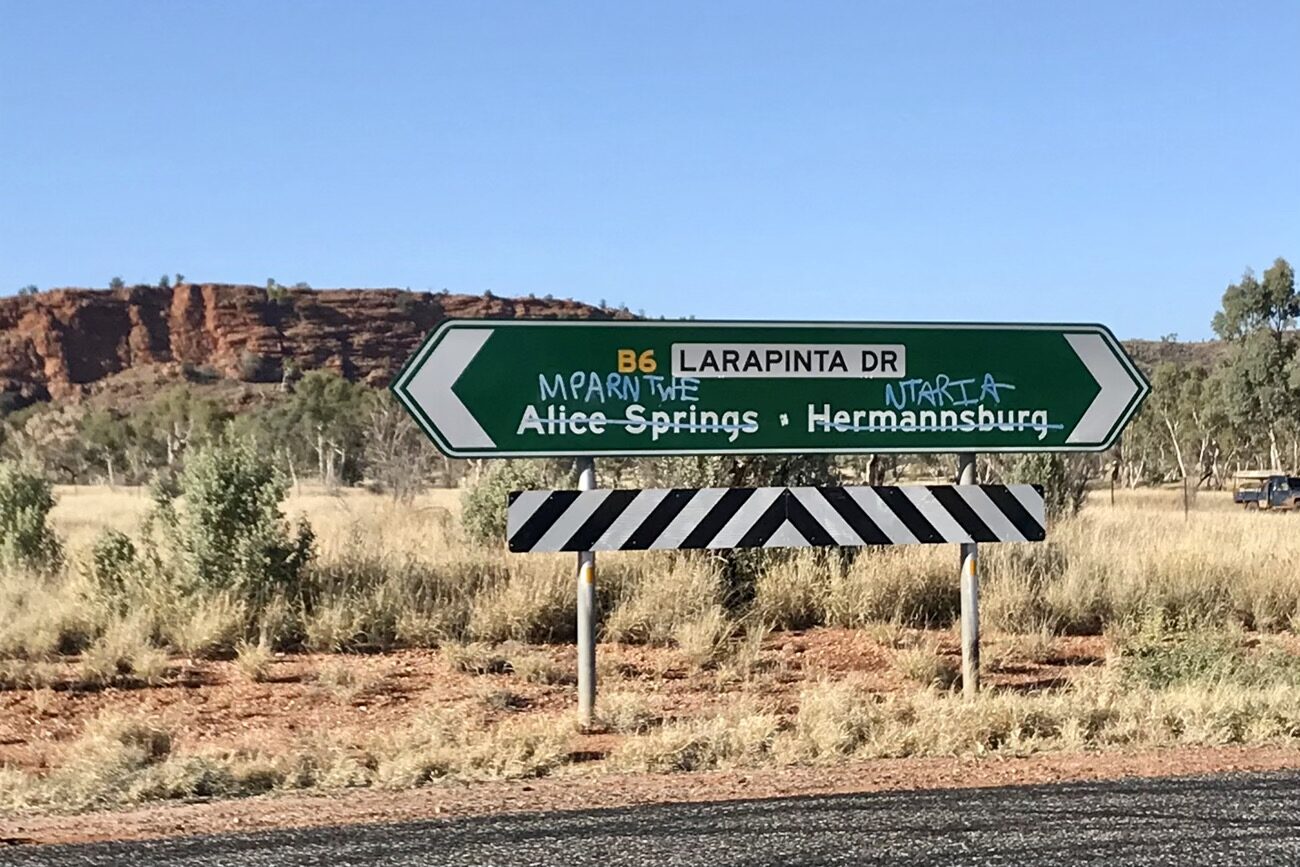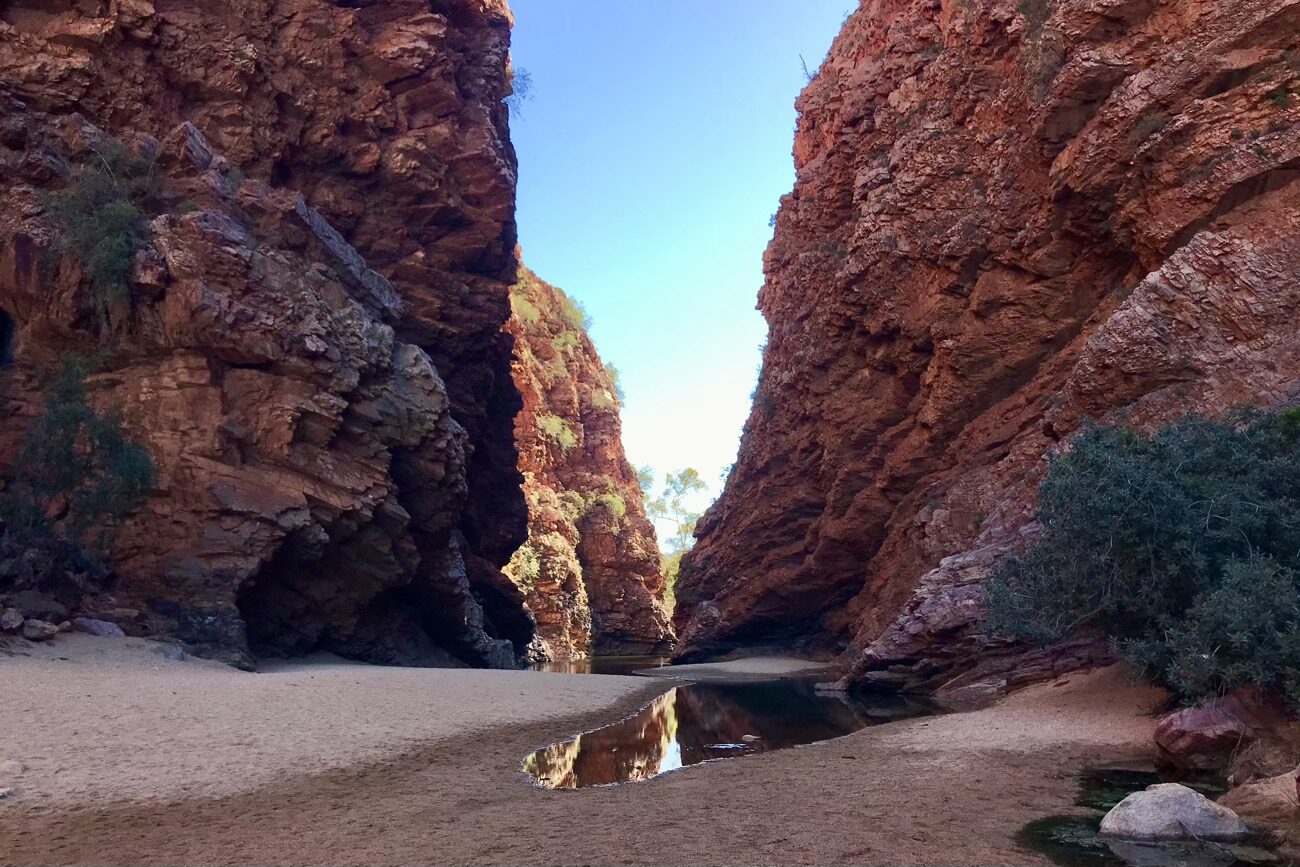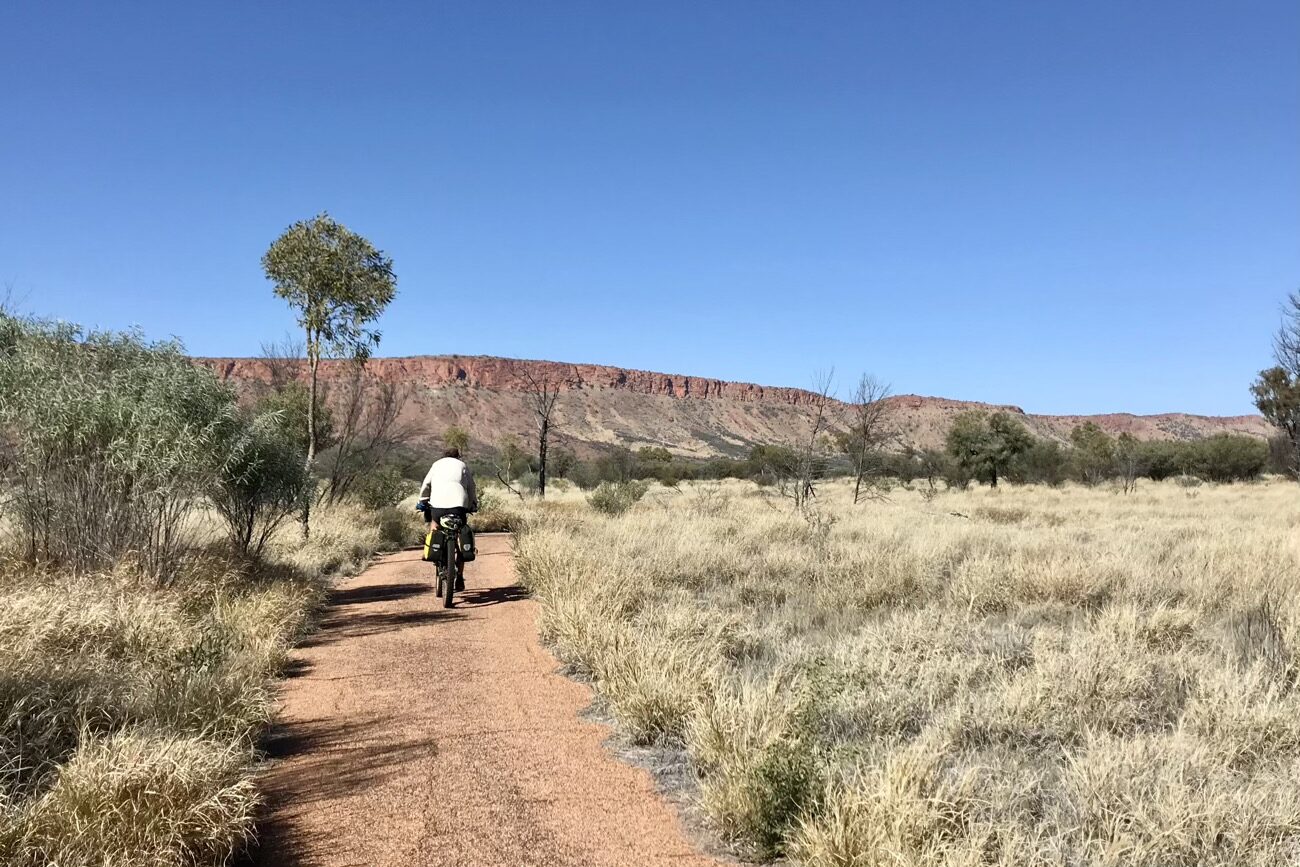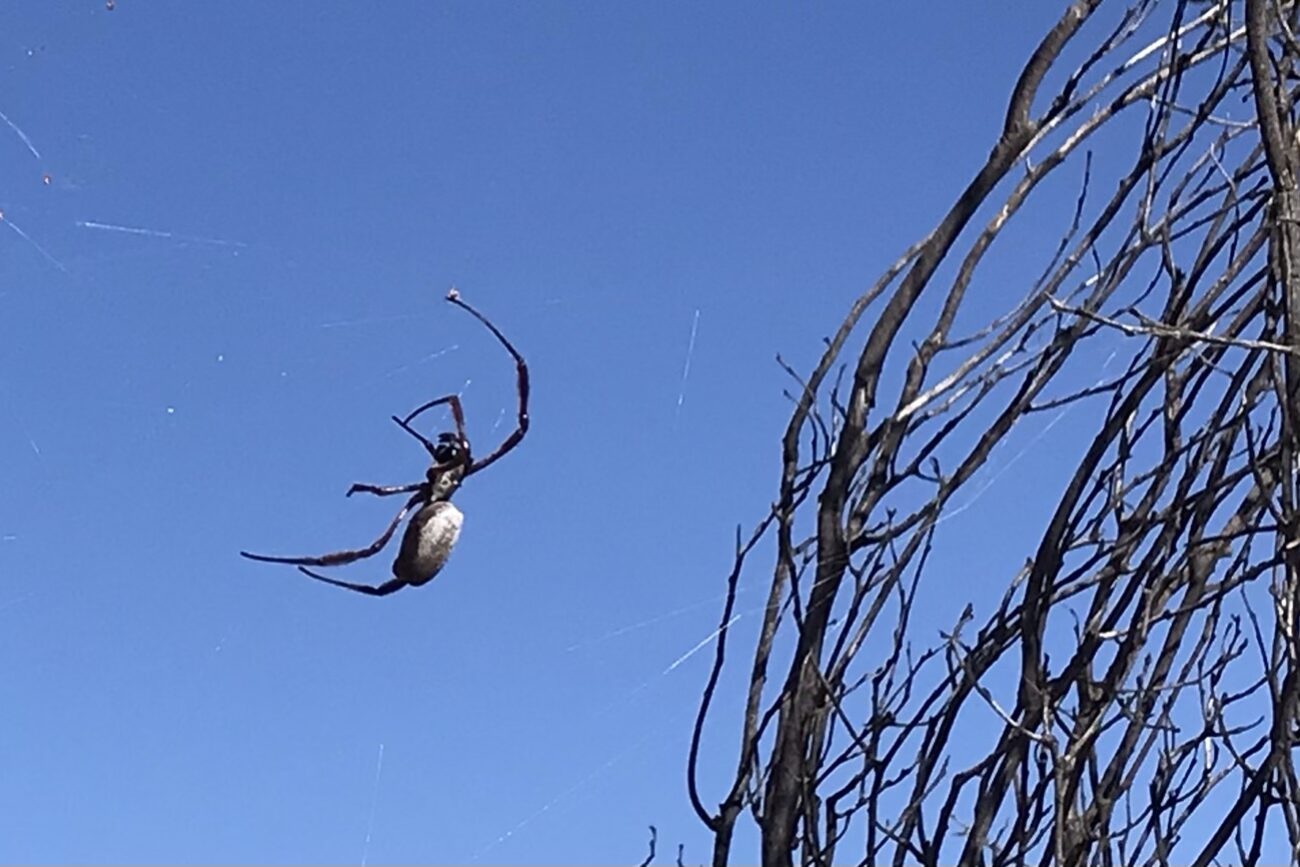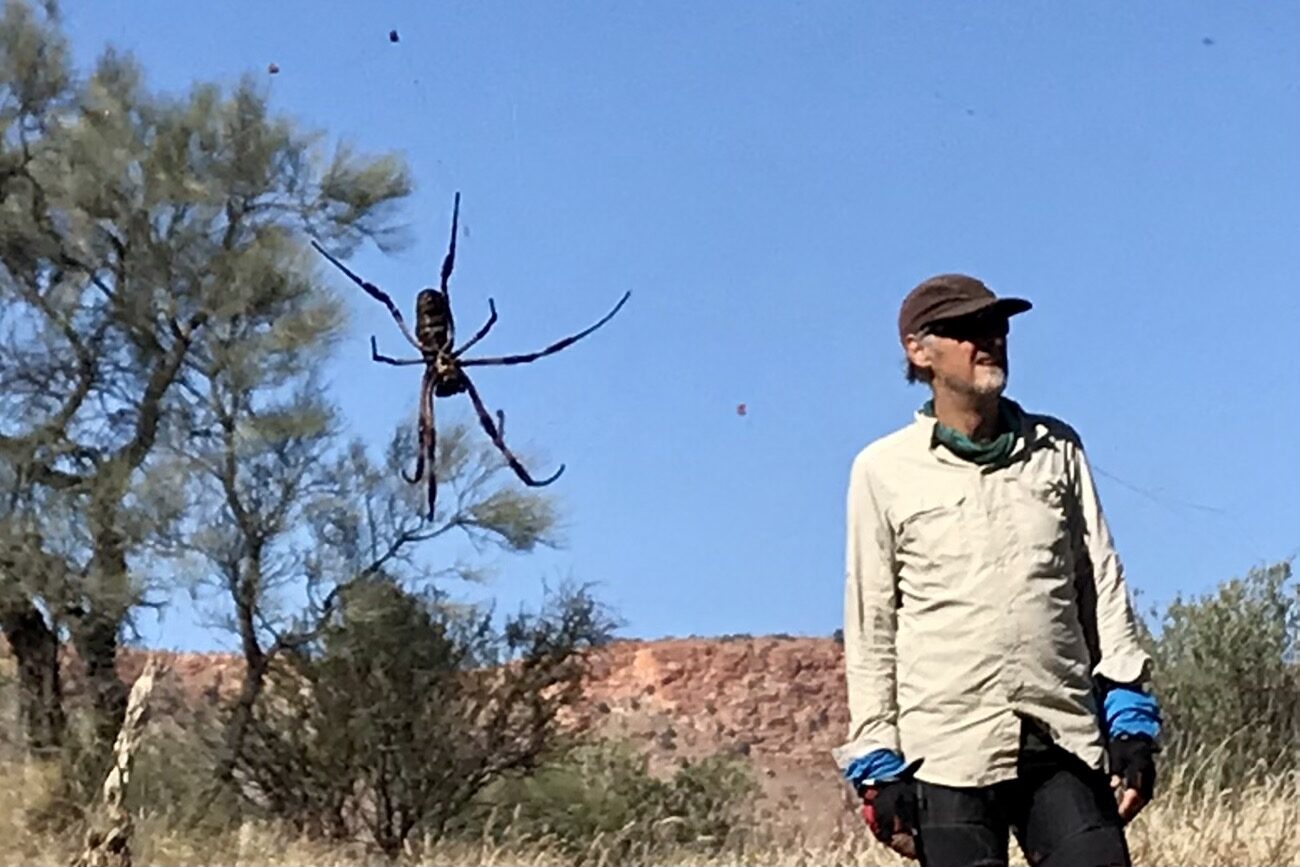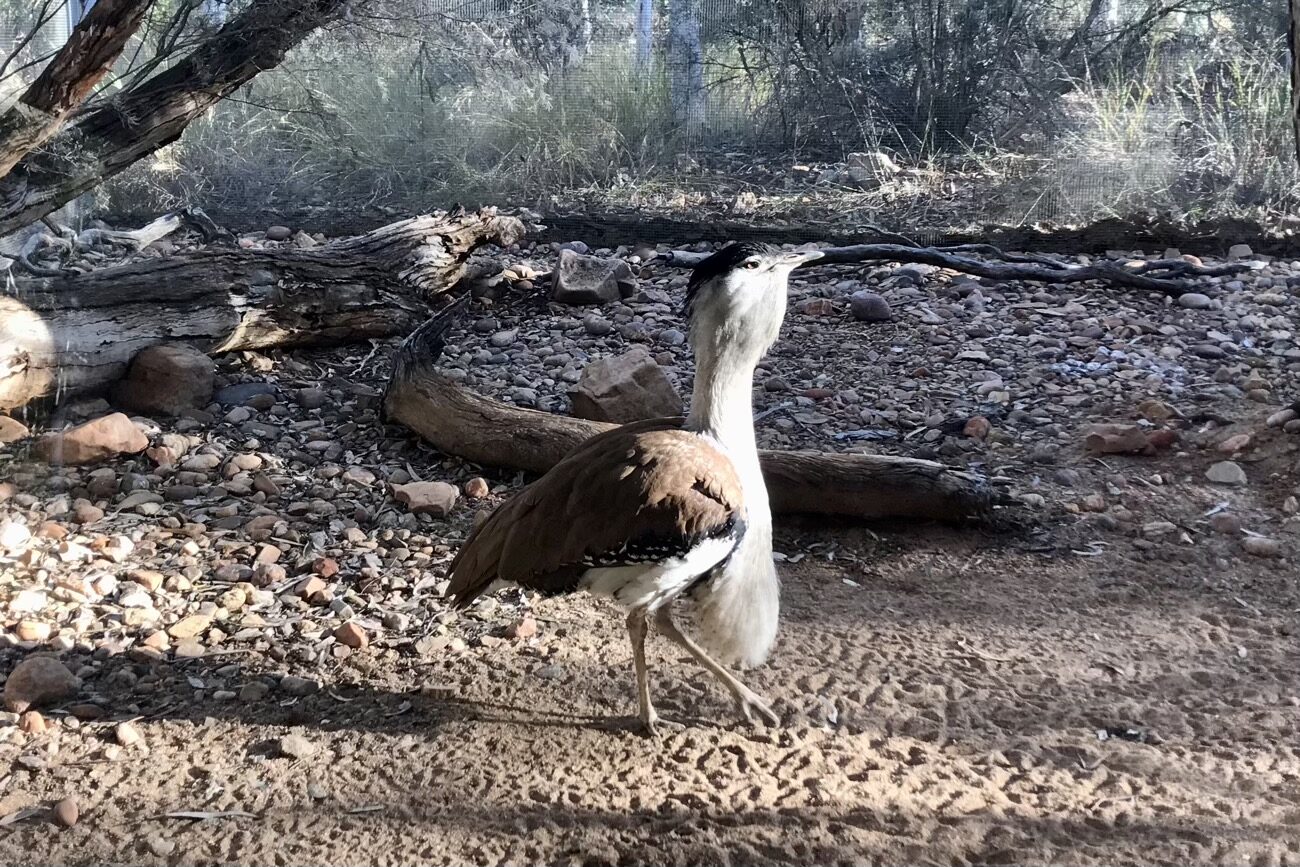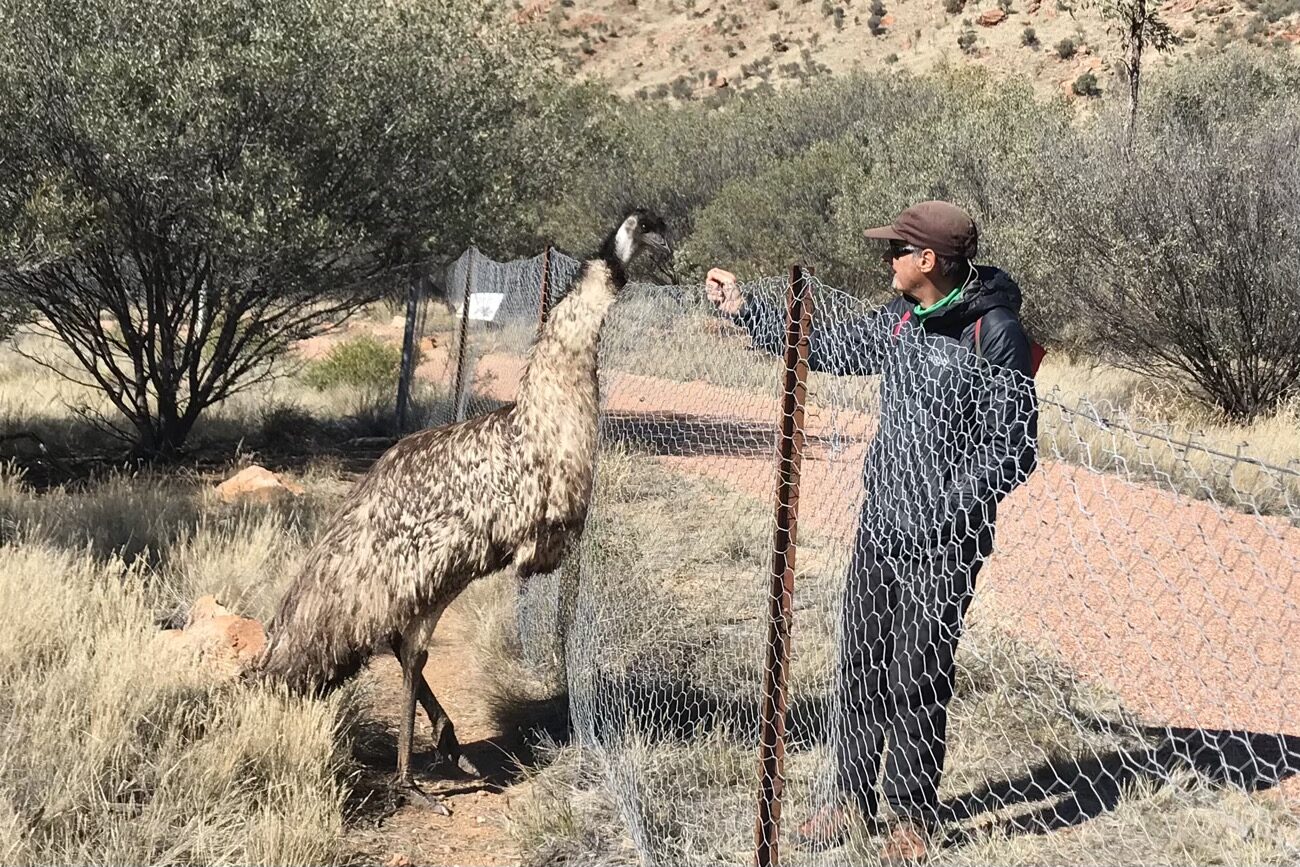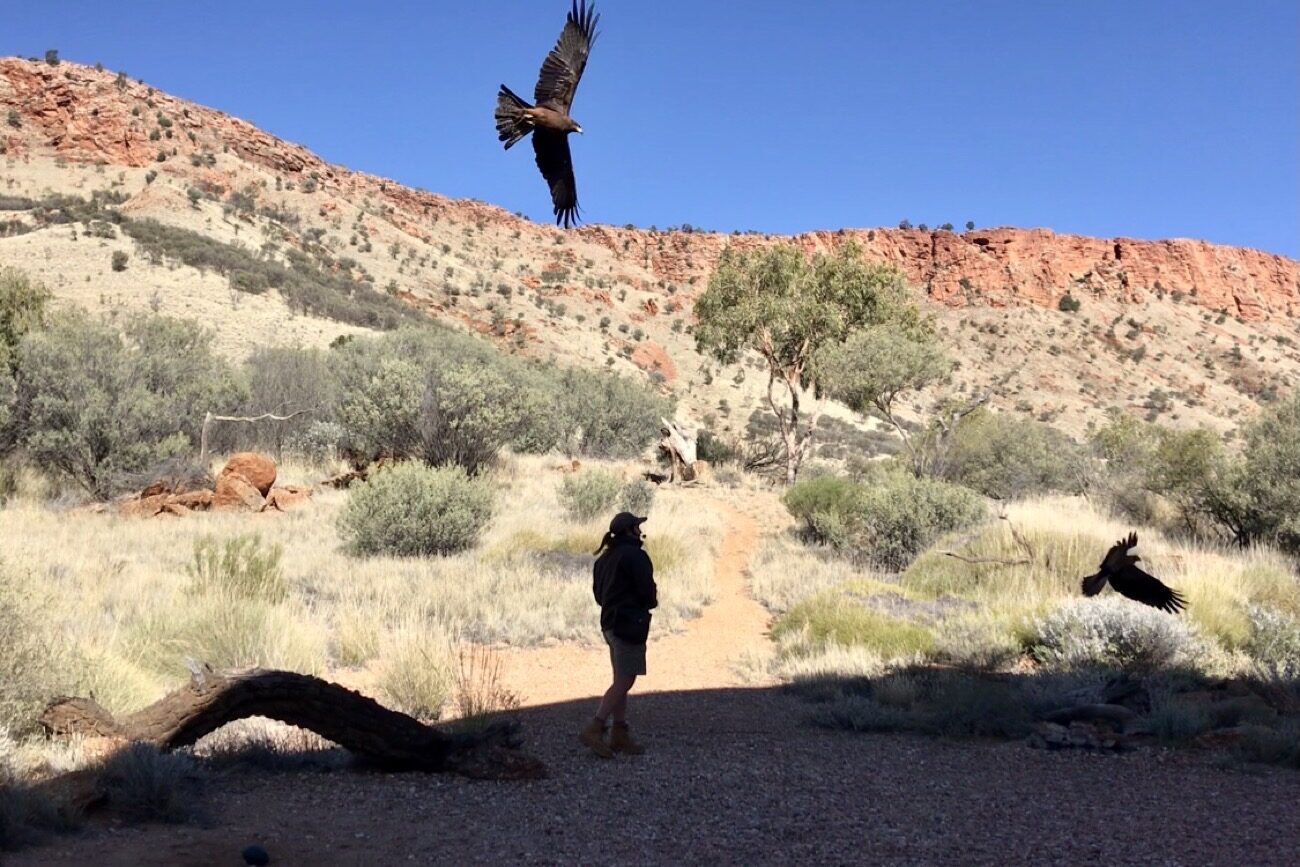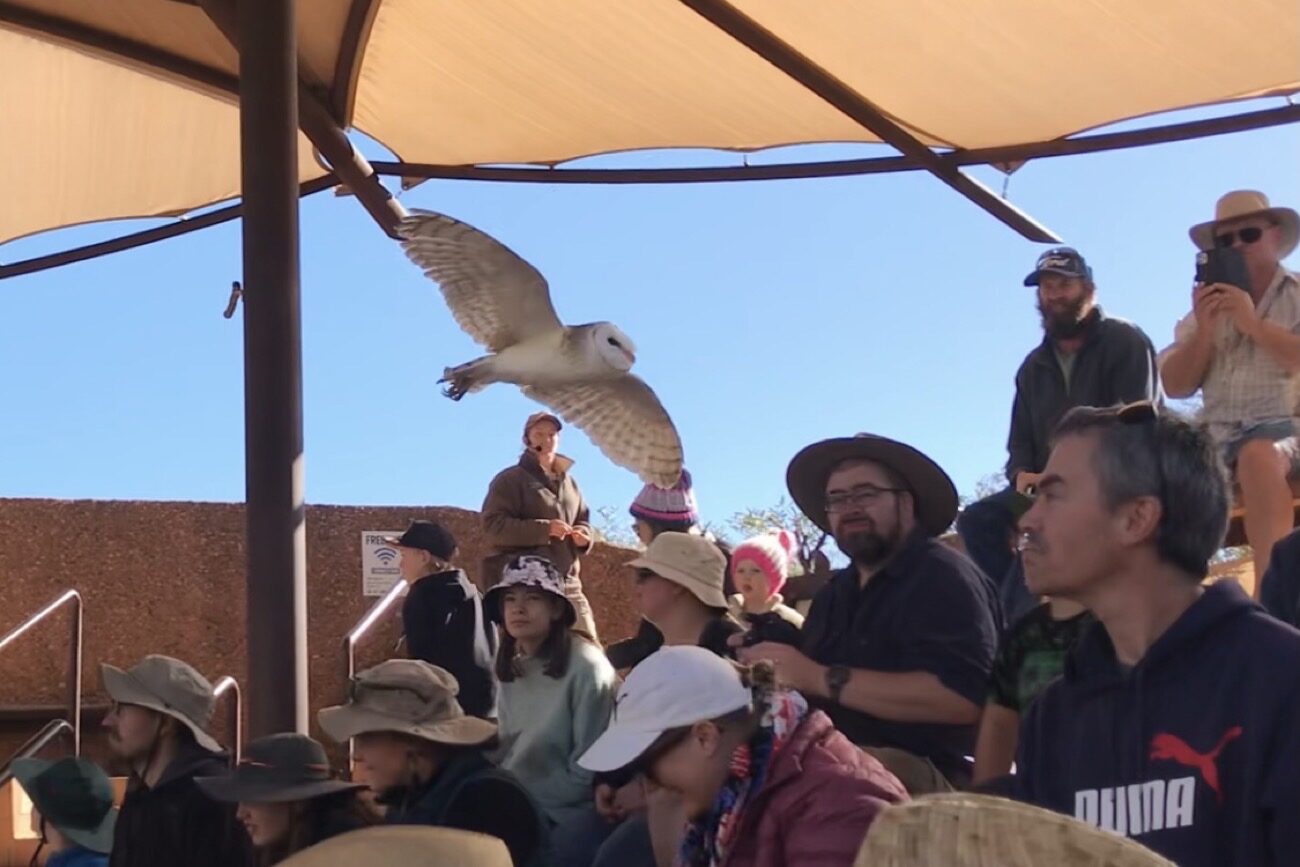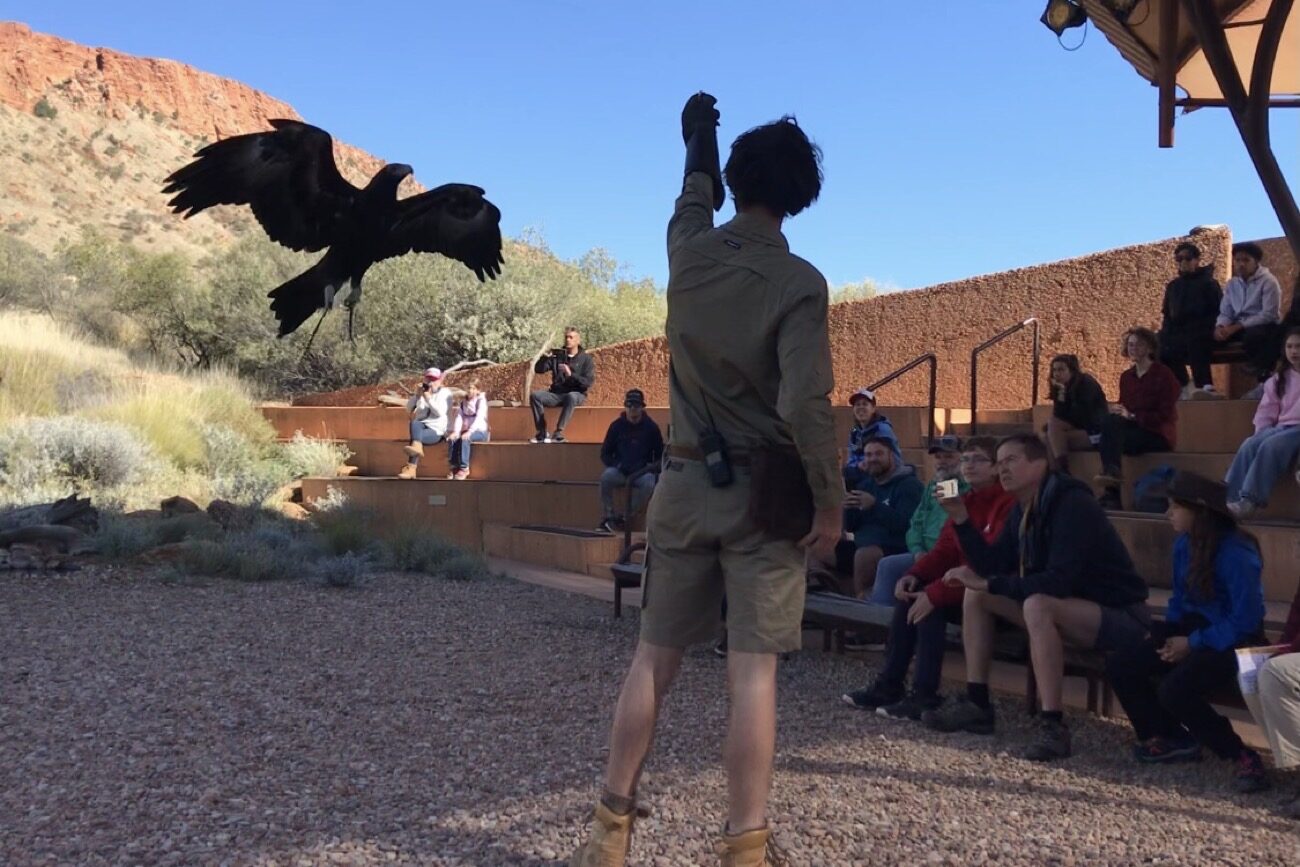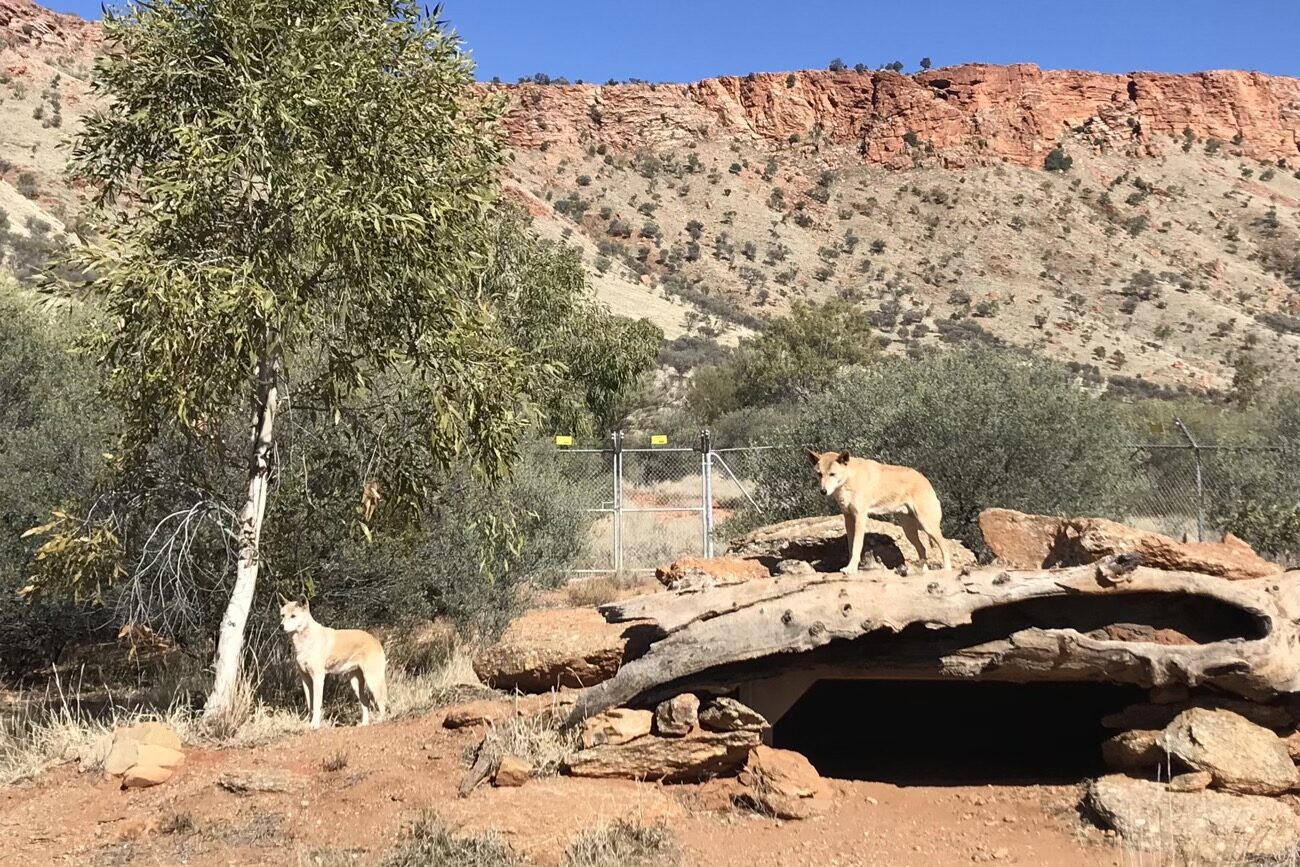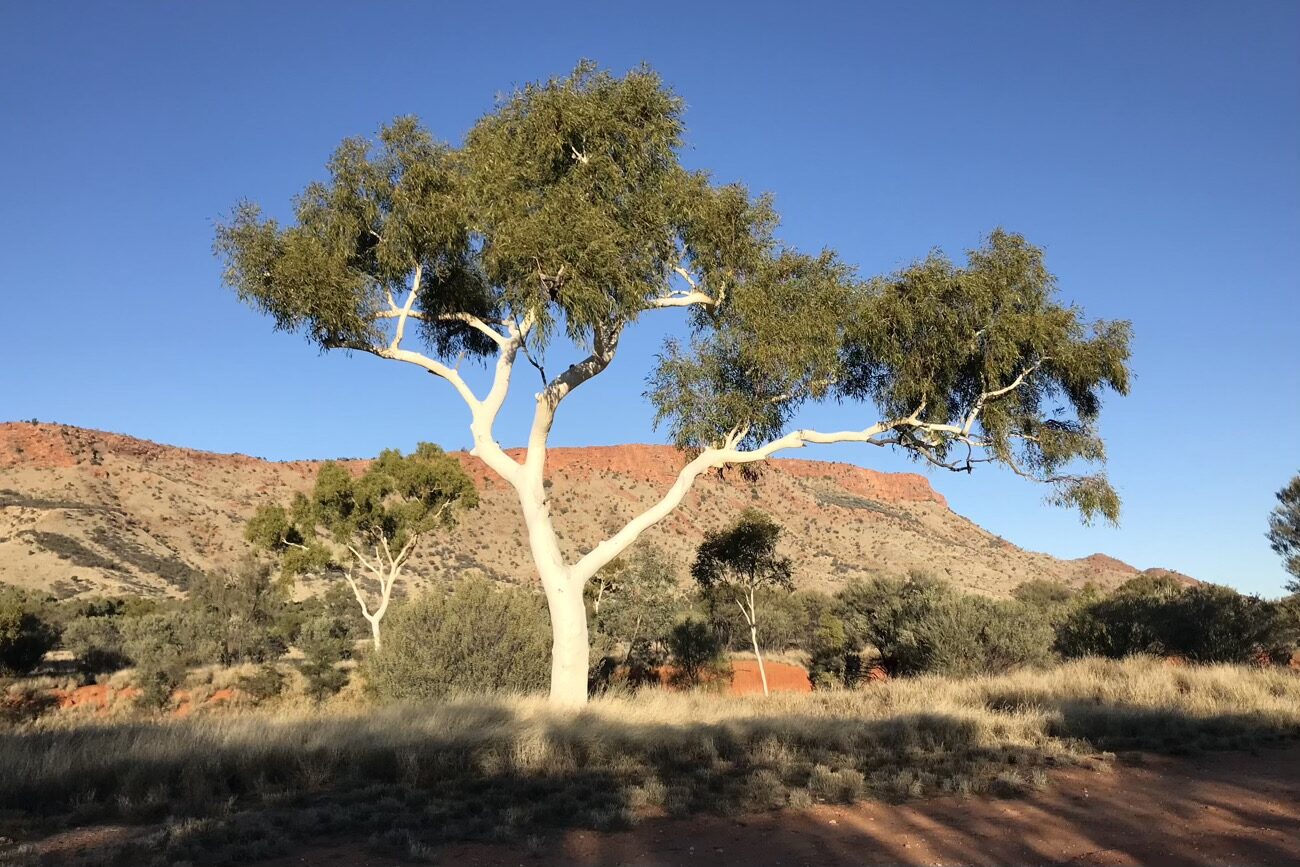After our walk around Kings Canyon we packed up and refueled on burgers, chips and cake at the ‘resort’ restaurant. The clouds broke and we had a sunny departure. The first 10km were bitumin followed by a pretty smooth and fast dirt road. We climbed to a low pass at about 30km and decided it was too nice a camping spot to miss. We enjoyed a small campfire and a big moonrise.
Next day we experienced the good, the bad and the ugly of 80km of the dirt road. We could avoid a lot of the corrugations by continually scanning for the smoothest line and winding back and forth across the road to get to it. Luckily the road has a reputation for being rough, and especially after the rain there was a lot less traffic. There were still some big mud puddles but easily missed and the worst travel for a cyclist was the hard rocky cobbled sections which were unavoidable.
We found another good camp which ticked the boxes of: flat ground not too close to the road, a tree to park under to reduce overnight condensation and firewood. We had overnight visitors of a few wild horses snuffling but they didn’t hang around.
Next morning we enjoyed calm conditions and a better road surface for the final 40km till we hit the sealed road of Namatjira Drive.
The roads took us 2/3 the way around a huge crater, Tnorala which was formed by a meteorite 140 million years ago OR according to Aboriginal belief, the crater was formed in the creation time, when a group of women danced across the sky as the Milky Way. During this dance, a mother put her baby aside, resting in it’s wooden baby-carrier. The carrier toppled over the edge of the dancing area and crashed to earth where it was transformed into the circular rock walls of Tnorala.
It was an interesting ride through to the Redbank Gorge at the western end of the MacDonnell Range and we camped at the final campsite of the well known 12 day Larapinta walking trail which starts in Alice Springs. Mt Sonder (1340m) is the highest peak along the range and is a popular sunrise climb from Redbank Gorge. Most ascensionists start walking at 4am but we opted for a 5am start. With a good moon we did not need the light of our headtorches and we arrived 10 minutes before sunrise. The dozen or so other summiteers were frozen from having gotten there too early.
It was a spectacular sunrise watching the colours change on the landforms below us overlayed by the giant shadow of Mt Sonder.
It was a short ride to Glen Helen station and the first place to buy food for 4 days. By mistake we had left a bag of food in the fridge at Kings Canyon campground – precious items like cheese, salami, spreads, yoghurt, some fruit and vege. We hadn’t starved but we were certainly craving more tasty food. We wild camped across the road alongside the Finke river, deduced geologically to be one of the oldest rivers in the world at 300-400 million years old.
Next stop along the Larapinta Drive was Ormiston Gorge, one of the spectacular gorges that bisect the MacDonnell range. Also spectacular were the toasted sandwiches, scones and muffins. We bumped into the Oddessy team who had given us a lift up the Stuart Highway and enjoyed a catch-up.
Our destination for the night was Ellery Ck Big Hole further along the range. We arrived around 4pm, just as the sun was about to leave the very inviting waterhole and inflicted the crowd of people enjoying the natural beauty of the place to views of us diving in in our ‘undies/togs’ – we hadn’t had a shower for a number of days so it was cold bliss. This was to be our last night with a fire and we enjoyed a peaceful camp on the sandy riverbed nearby.
We were heading due east and between 8:10 and 8:30 our dreaded nemesis (now an easterly) would try to prevent fast forward progress. The weather was now as it should be so we couldn’t really complain (too much). The days were sunny and the evenings dead calm.
The next gap in the range was the spectacular Standley Chasm, a vertical slot canyon only a few metres wide. The land sorrounding is freeholded to an Aboriginal family who have been managing the tourist destination for the last 50 years, and doing a very good job. A World Expeditions vehicle stopped us en route to the chasm and plied us with leftover food from their guided Larapinta trail trekkers – roast lamb, veges, chia and cherry pudding, carrot cake and yoghurt. Such a treat and the guide was chuffed to hear I used to work for the same company. The road taketh and the road giveth!
So the last night in the red tent and it was a short hop to Alice Springs the next day. We were able to follow a bike path for the last 20km into town and the ever reliable Australian YHA hostel.
We spent most of the next day at the Desert Park, which showcases the diverse landscapes, flora and fauna of Central Australia. We saw dingos, red kangaroos, rare and endangered marsupials, snakes, reptiles, bats and one of the highlights was the bird show held in an open air amphitheatre with birds such as kites, a buzzard, a wedge tailed eagle, a barn owl, cockatoo and even an (untrained & wild) Willy wagtail performing on cue. It was so well done and is a must see.
So another special journey is over. It was a journey of 2 halves, the Mawson track followed by travel in the Outback. In reflection the gravel roads and dirt tracks of the Mawson were the quietest, smoothest, hilliest and most convoluted but the landscape had in most part was developed. The spaces between the Outback roadhouses and resorts were vast, empty of human interference and full of colour, but the roads were busier with long distance caravaners and 4WDers.
I return home with inspiration and motivation for more red dirt pedalling – after all it is not that far away…
